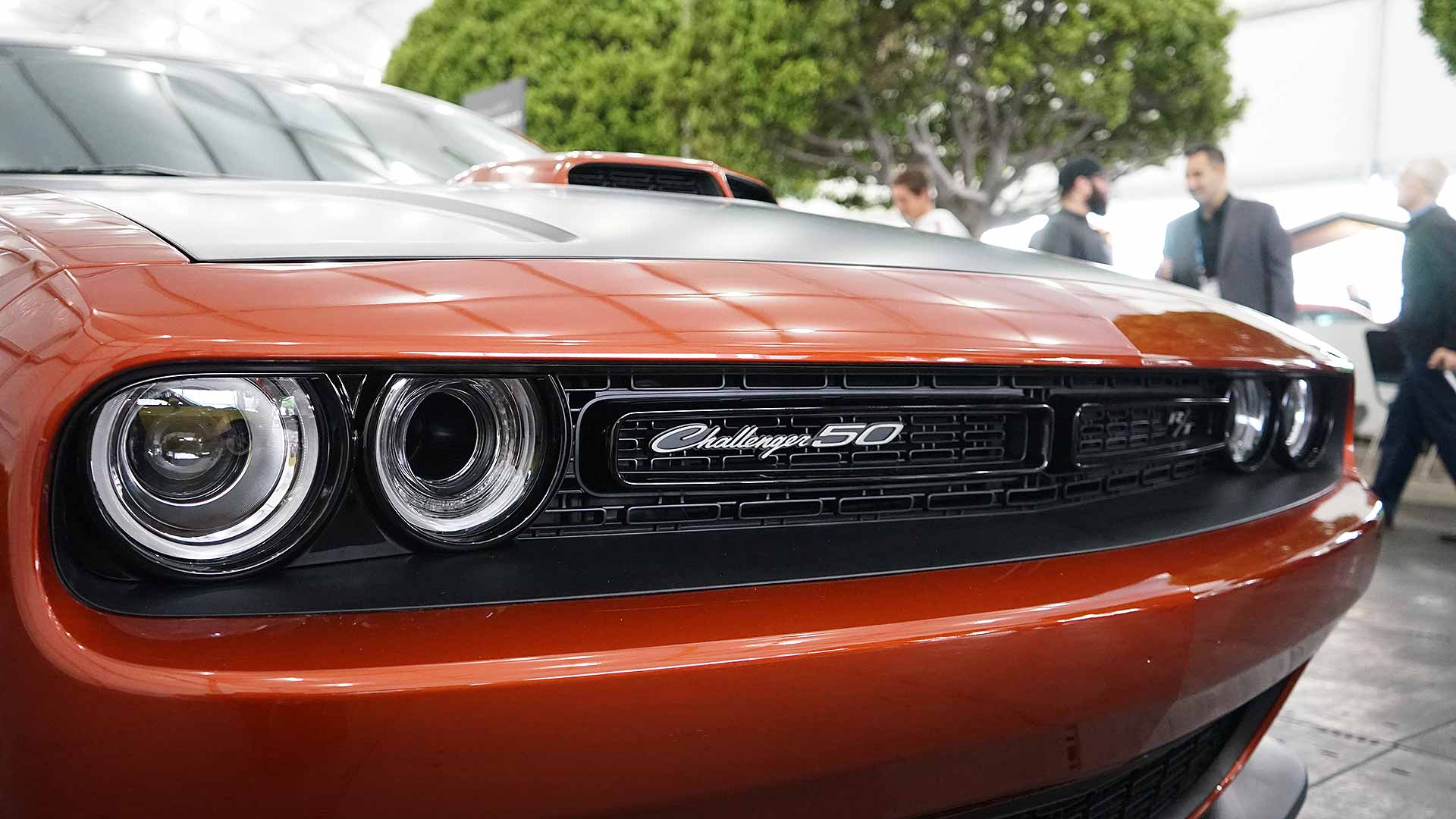
One of the major attractions at the 2019 Los Angeles Auto Show is a celebration of the Dodge Challenger’s 50th anniversary, and a special new version.
To help get in the party mood, we have dived into the archives to see the Challenger go from a young pony car, through to a modern muscle machine. We have even included the awkward teenage years, too.
More on Motoring Research:
- Yee-haw! The Dodge Challenger is 2019’s official Car of Texas
- Ultimate Demon: 1,200 hp SpeedKore Twin-Turbo Dodge Challenger sets new record
- Dodge Hellcat stolen from TV star Richard Rawlings is found intact
Dodge announces 50th Anniversary Editions in Los Angeles
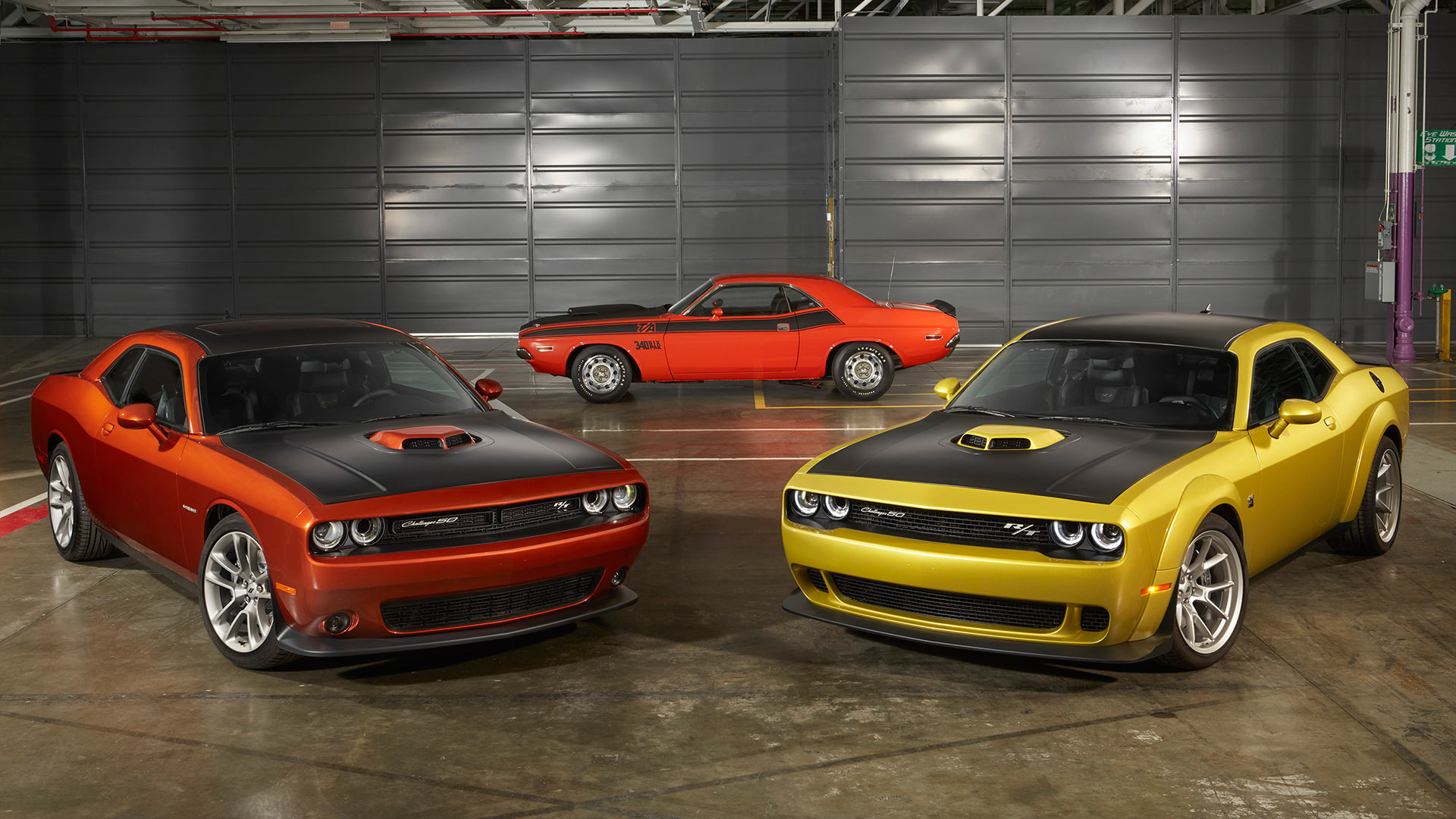
As part of the opening day of the 2019 LA Auto Show, Dodge used a special ‘Power Breakfast’ event to unveil limited edition versions of the 2020 Challenger (more on this later). Special paint and badging are the main attractions, along with neat interior details.
The 50th Anniversary package can be added to any 2020 Challenger model, with the Hellcat and Redeye models also receiving special badging.
However, before we get to them, let us take a look back at how the Dodge Challenger got to being 50 in the first place.
1970 Dodge Challenger RT 440 Six Pack
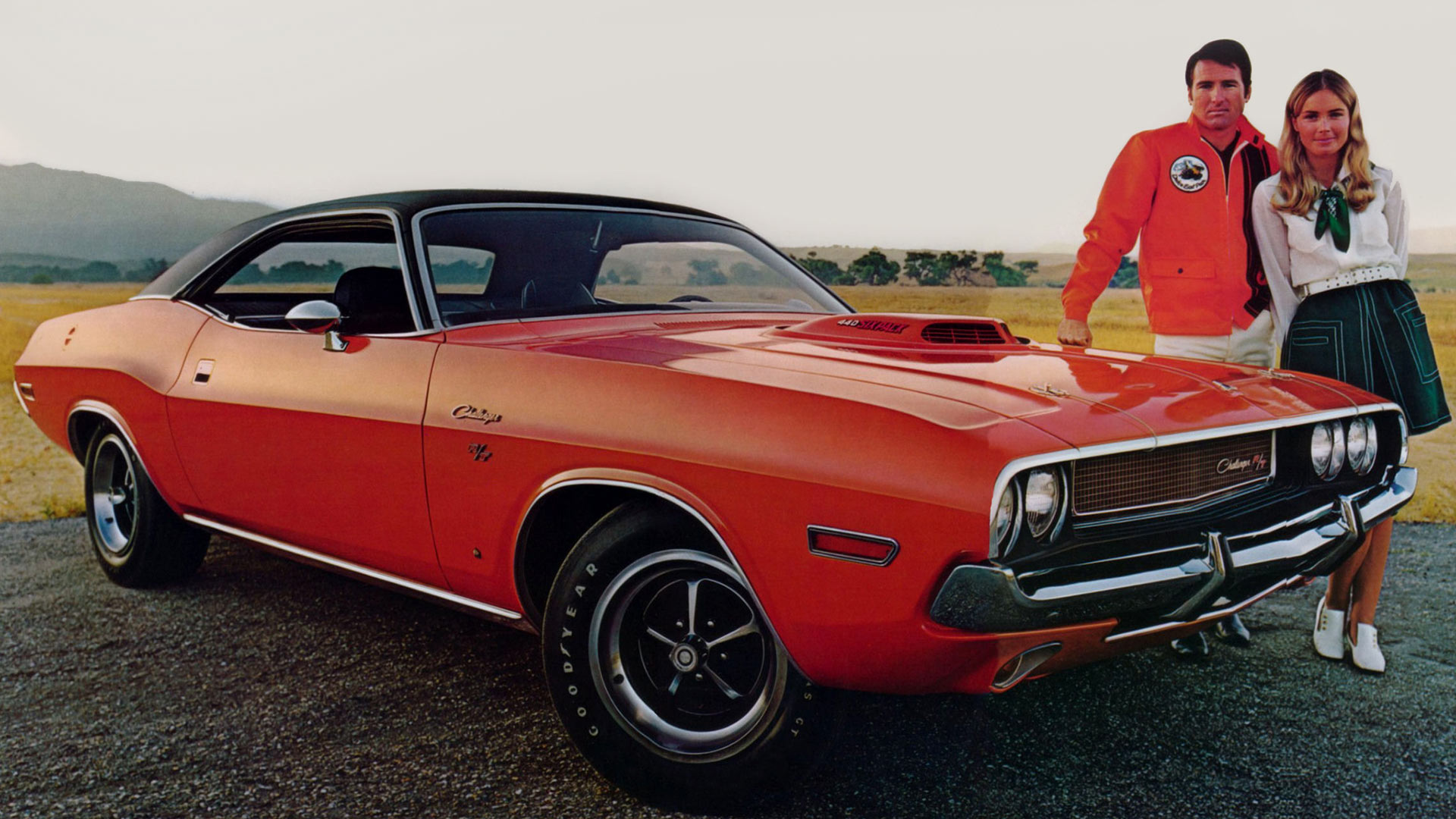
Despite the Ford Mustang having debuted in 1964, it took Chrysler until late 1969 to finally reveal its own pony car contenders. Built on the Chrysler E-body platform, the Dodge Challenger slotted into the Mopar performance lineup below the larger Charger.
Engine options ranged in size from the entry-level 225-cubic inch slant-six, all the way to the huge 440-cubic inch RB V-8. When fitted with the optional Six Pack carburettor setup, the 440 engine could produce an incredible 390 horsepower and 490 lb-ft of torque.
1970 Dodge Challenger RT Convertible
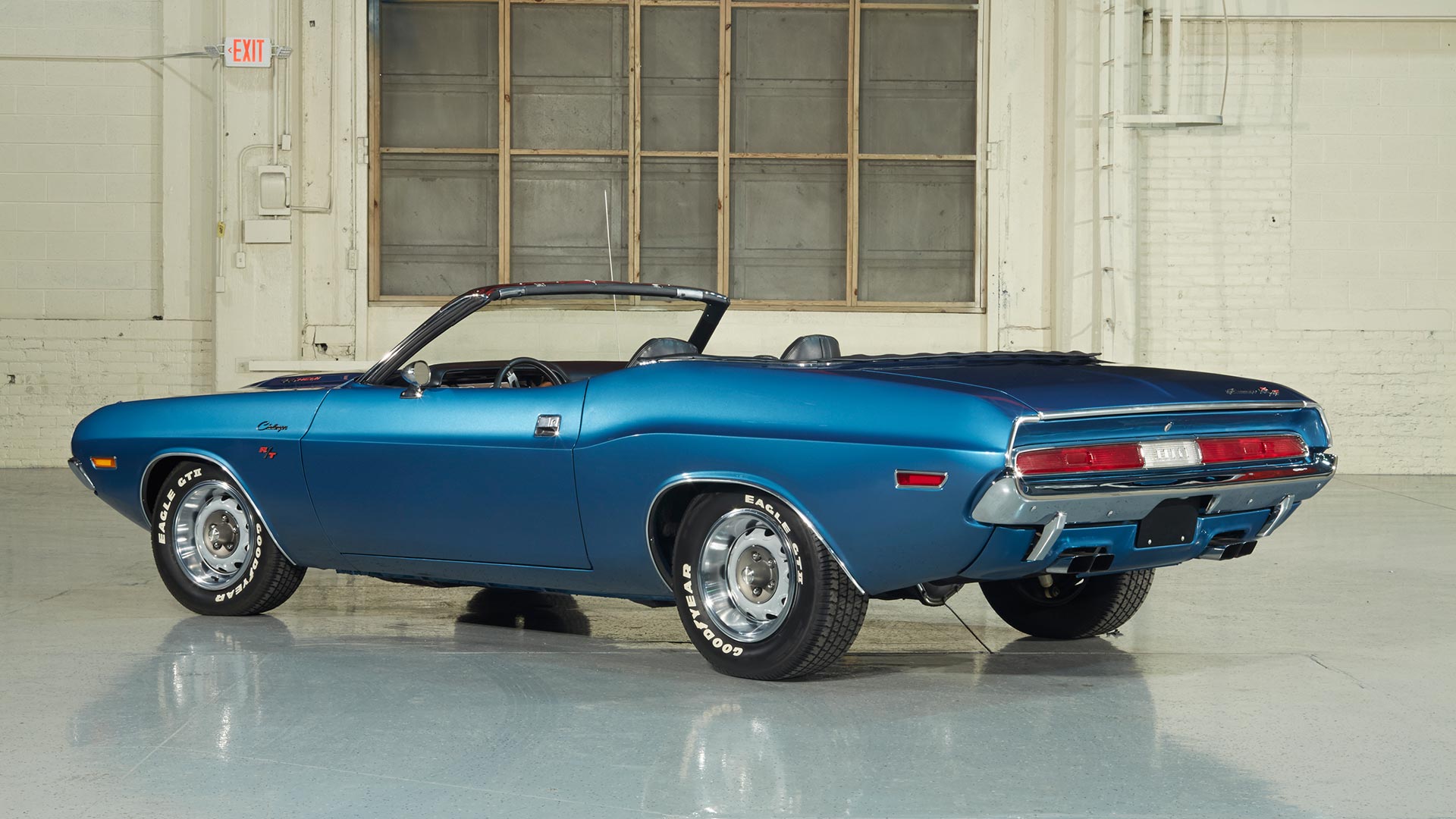
The most impressive engine option of all for the 1970 Challenger was the, now legendary, 426-cubic inch Hemi V-8. This road-going version of an engine intended for use in motorsport offered Challenger buyers serious performance. Officially rated at 425 horsepower and 490 lb-ft of torque, their rarity has made them serious collector items.
Along with the two-door hardtop coupe, Dodge also launched the Challenger as a convertible in 1970. However, the vast majority of customers opted for the coupe version, leaving open-top R/T models to be some of the rarest Challengers produced.
1970 Dodge Challenger TA
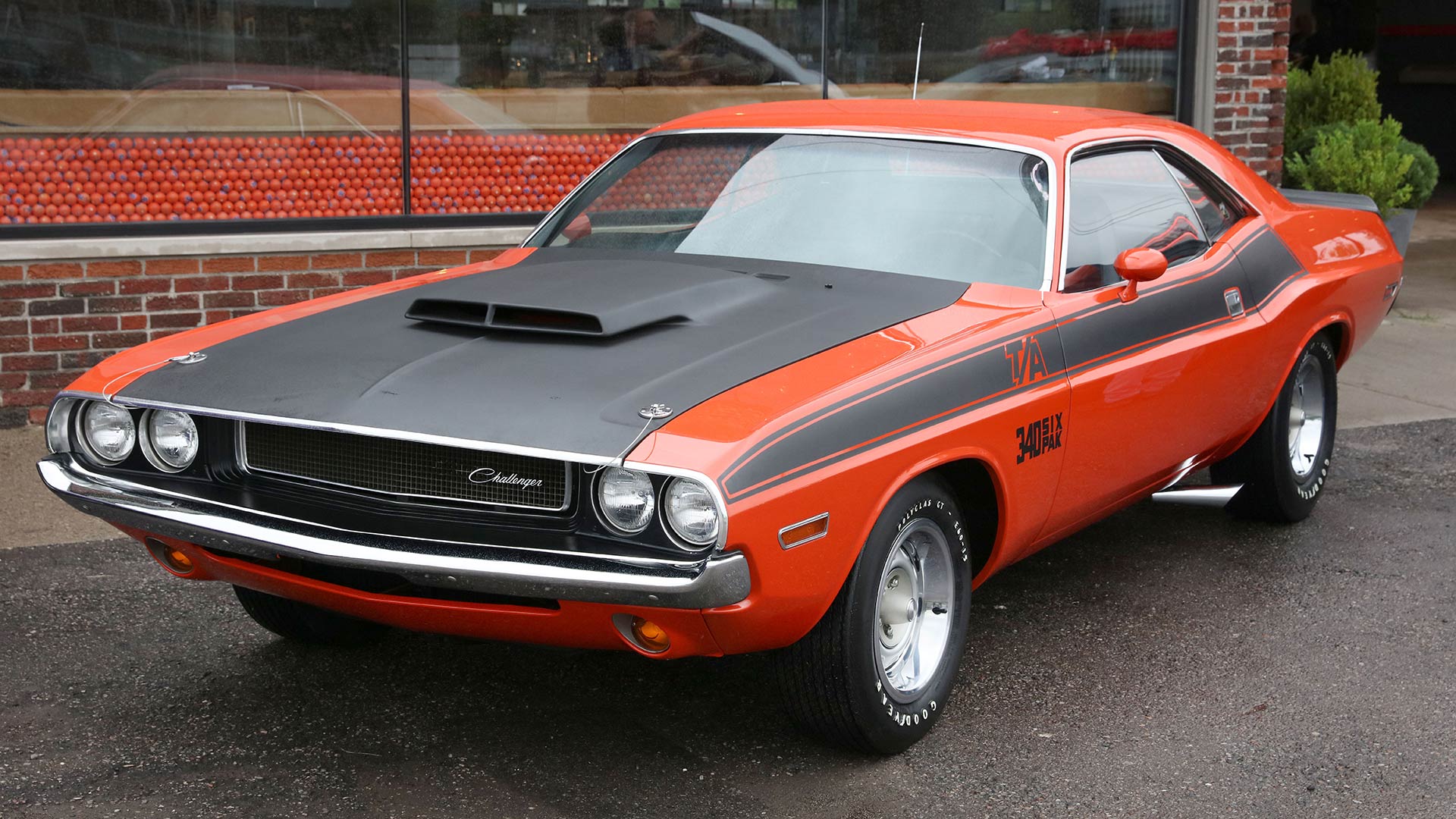
Offered solely for the 1970 model year, the Challenger T/A was made to allow Dodge to homologate the Challenger for SCCA Trans Am sports car racing. All road-going units of the T/A featured a 290 horsepower 340-cubic inch V-8 engine, along with a four-speed manual transmission.
The biggest changes were on the outside. A matte black fiberglass hood included a giant ram air intake, whilst the exhaust gases exited through megaphone-style tailpipes ahead of the rear wheels. Only two race cars were completed, and Dodge failed to take any wins during the 1970 Trans Am season.
1970 Plymouth Hemi Cuda
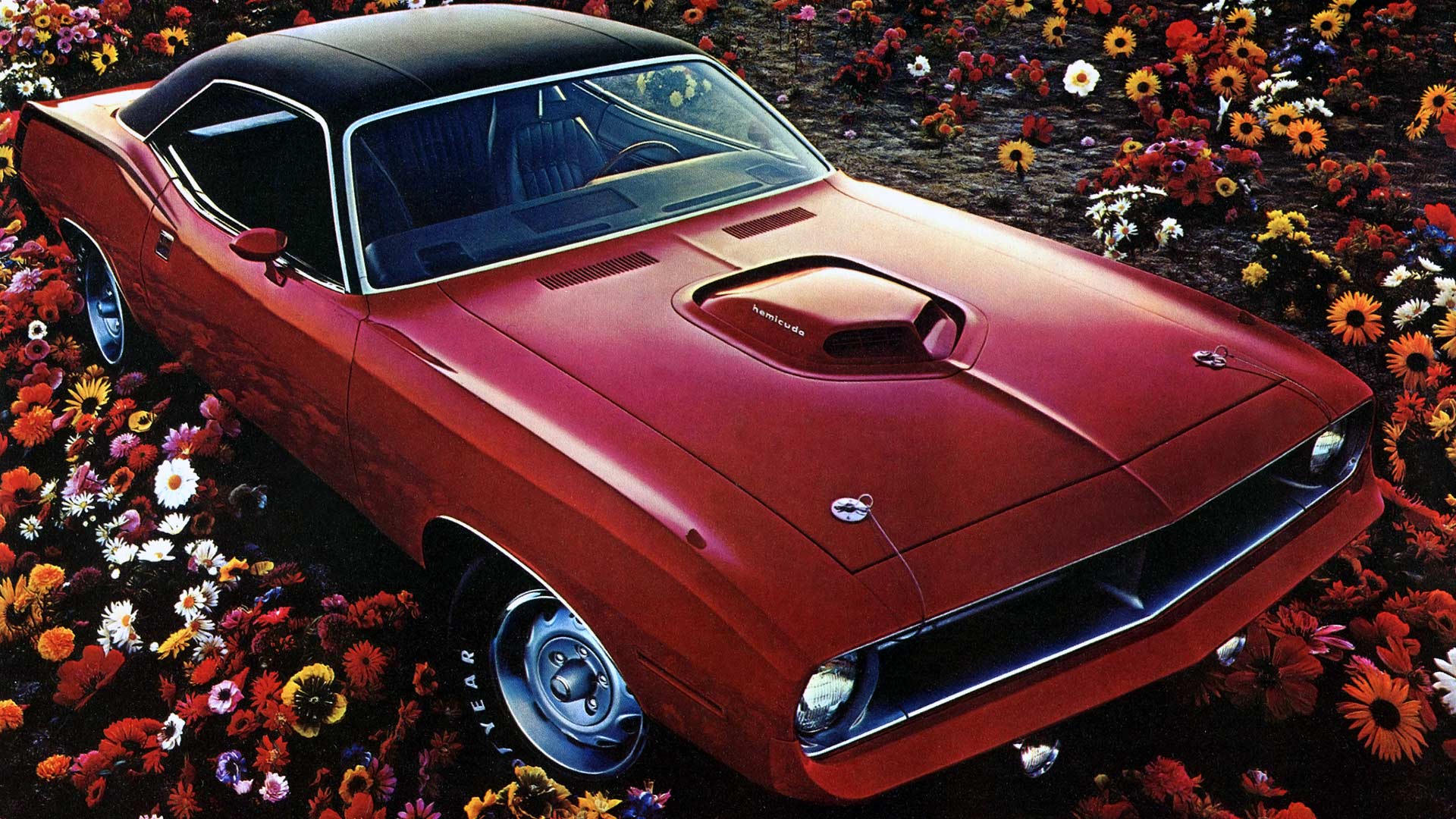
Sharing the E-body platform with the Challenger was the third-generation Plymouth Barracuda. The Barracuda shared no body panels with the Challenger, and used a slightly shortened wheelbase.
Plymouth presented the Barracuda as the marginally more affordable version of the Challenger, despite most engines and options being the same. As with the Challenger, the rare ‘Cuda versions using the 426-cubic inch Street Hemi engine remain some of the most valuable muscle cars ever made.
1971 Dodge Challenger Indy 500 Pace Car
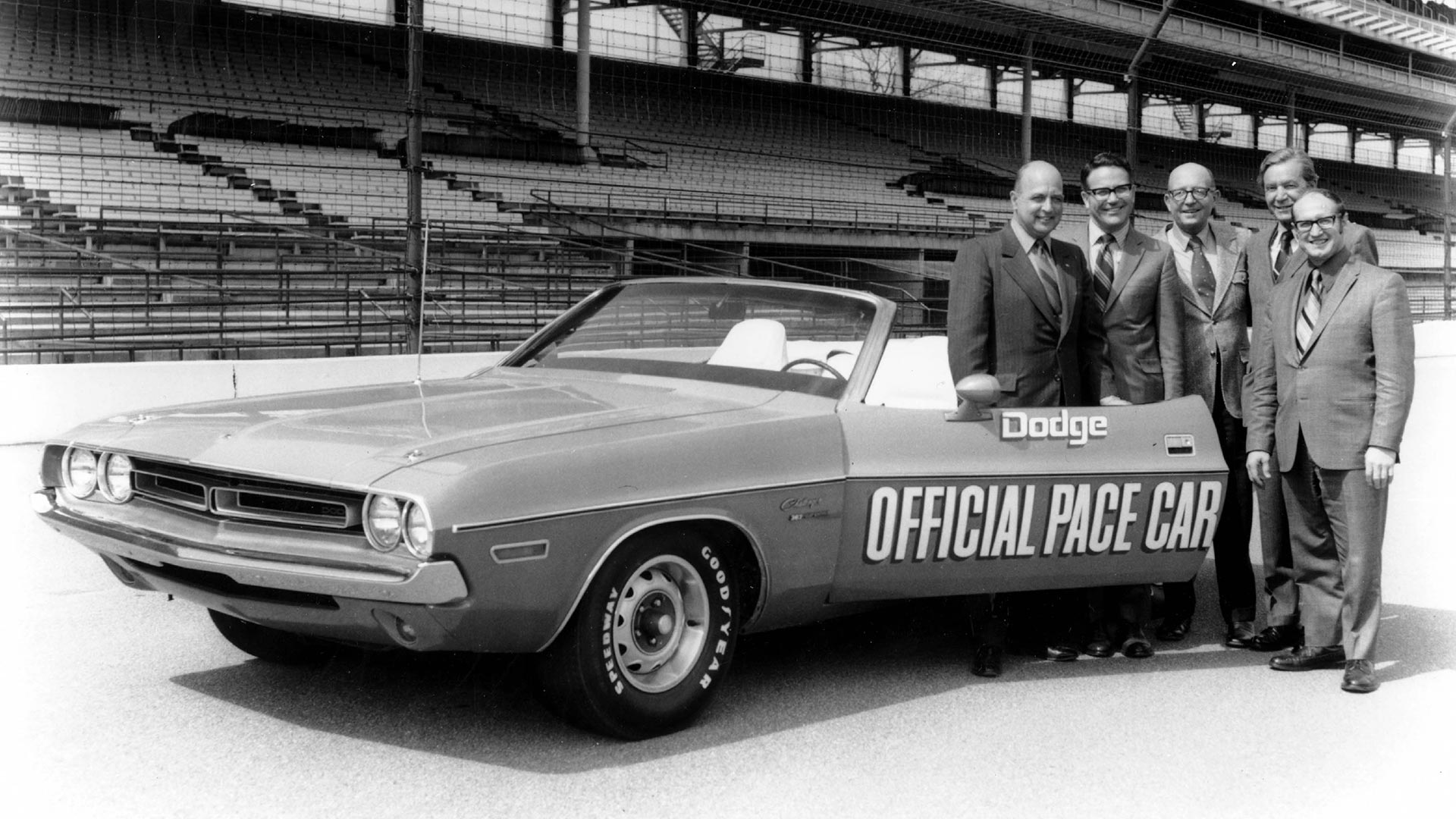
For 1971, Dodge left the Challenger mostly unaltered. The most obvious change was a redesigned front grille, whilst the tail lights also gained a new look. Dodge introduced a new ‘Challenger Coupe’ version, intended to be the cheapest model in the range.
During 1971, the Challenger gained notable exposure by being the official pace car of the Indianapolis 500 race. Provided by a collection of local Dodge dealerships, the Challenger was involved in a high-speed collision with a photographers’ stand when pace car driver Eldon Palmer lost control.
1972 Dodge Challenger Rallye
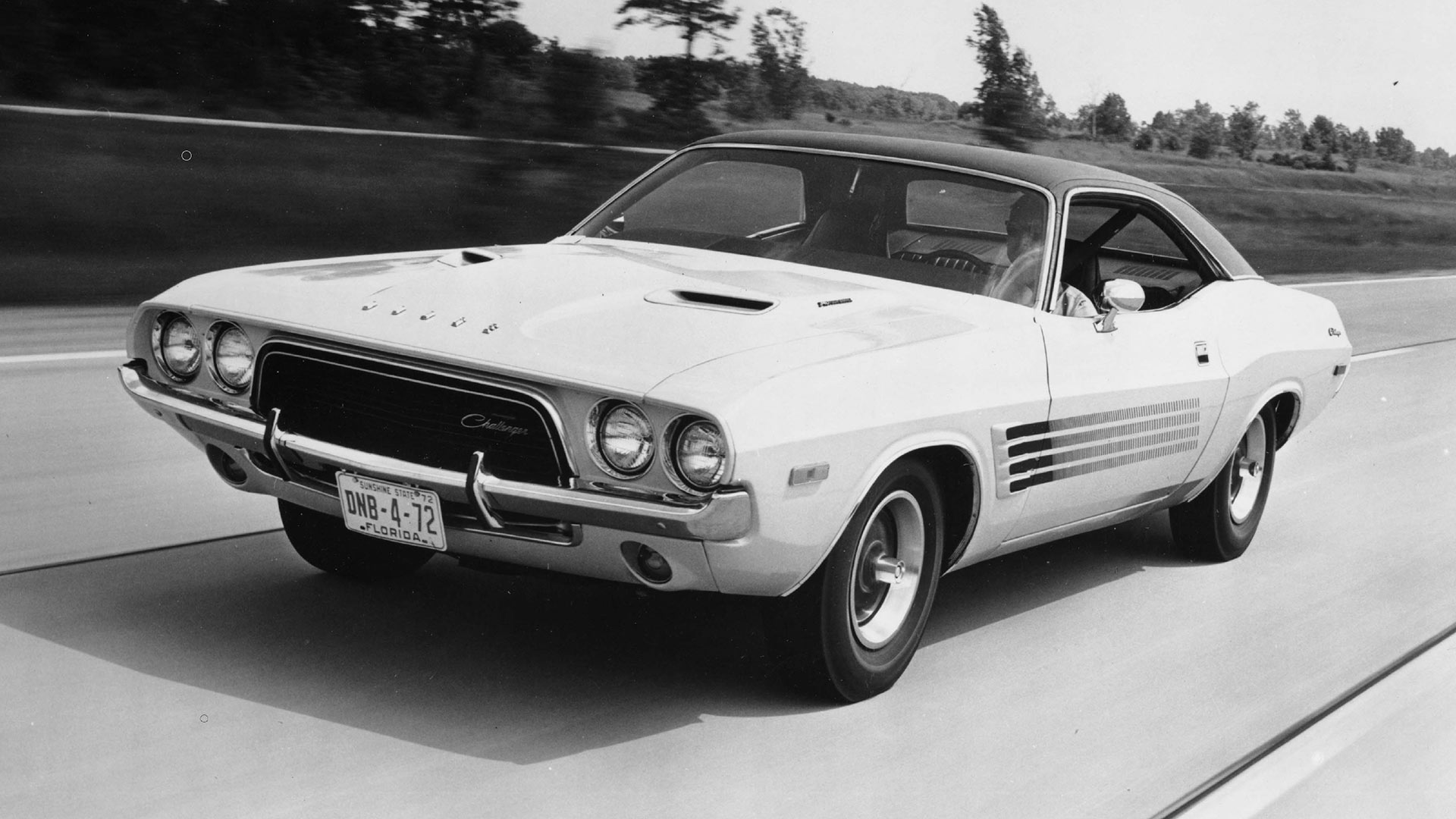
Another subtle facelift was undertaken for 1972, with the Challenger’s front grille changed yet again. Now extending below the front bumper, it gave the car a mildly unhappy appearance. The convertible Challenger was also dropped, leaving the entire Dodge range of cars without an open-top model.
Pressure from insurance companies, and the need to meet new EPA emissions regulations, saw the engine options reduced and detuned. Dodge also ended the R/T model as the performance variant, replacing it with the Rallye name instead.
1973 Dodge Challenger Rallye
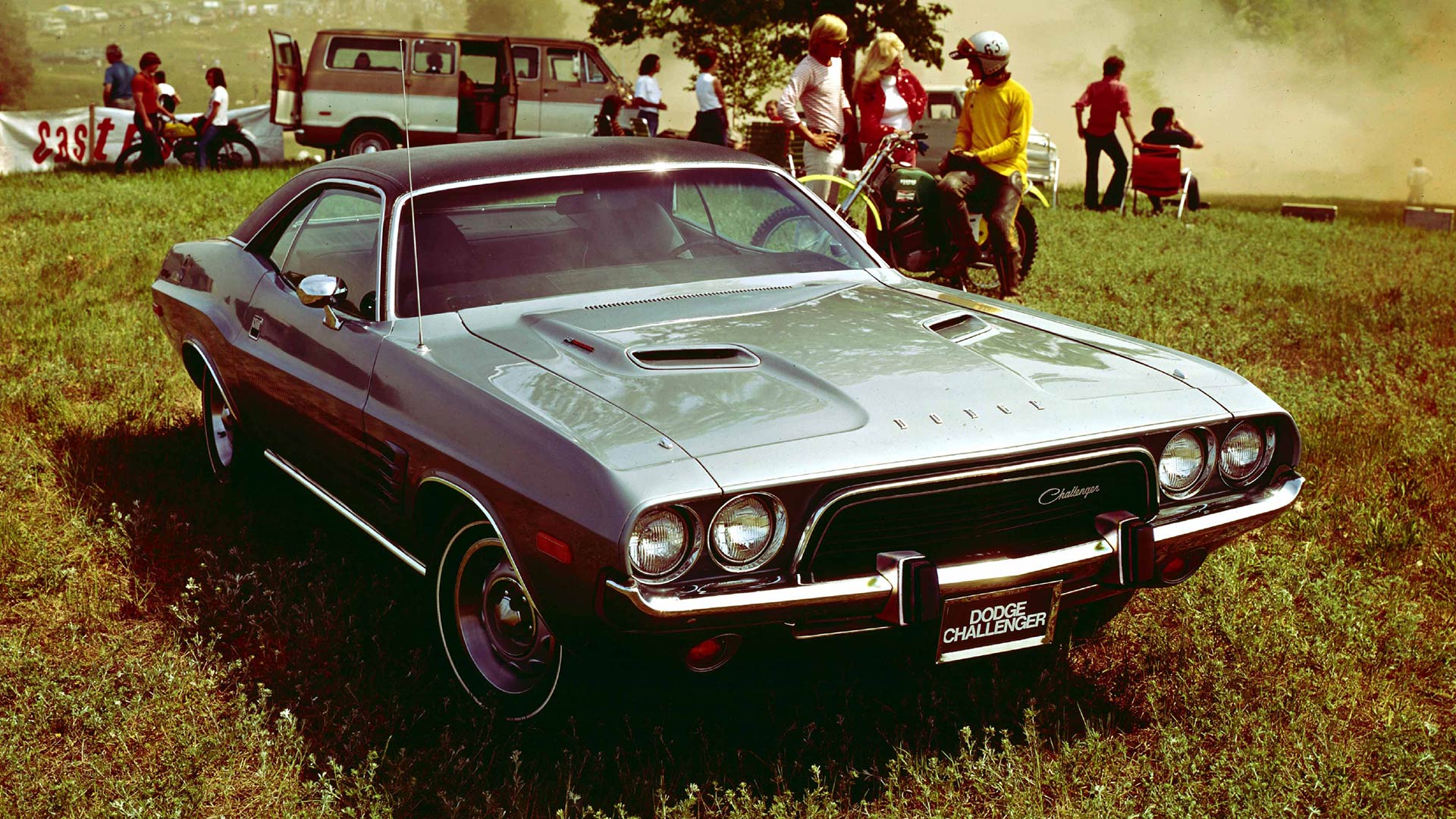
As the market for muscle cars continued to shrink, Dodge made only minor changes to the Challenger for 1973. Federally mandated bumpers were added, spoiling the previously clean lines of the Challenger.
Engine choices were reduced again, with only the 150 horsepower 318-cubic inch V-8 and 240 horsepower 340-cubic inch V-8 units remaining. That these engines were now rated at net output, not gross, also made them appear even less powerful than before.
1974 Dodge Challenger
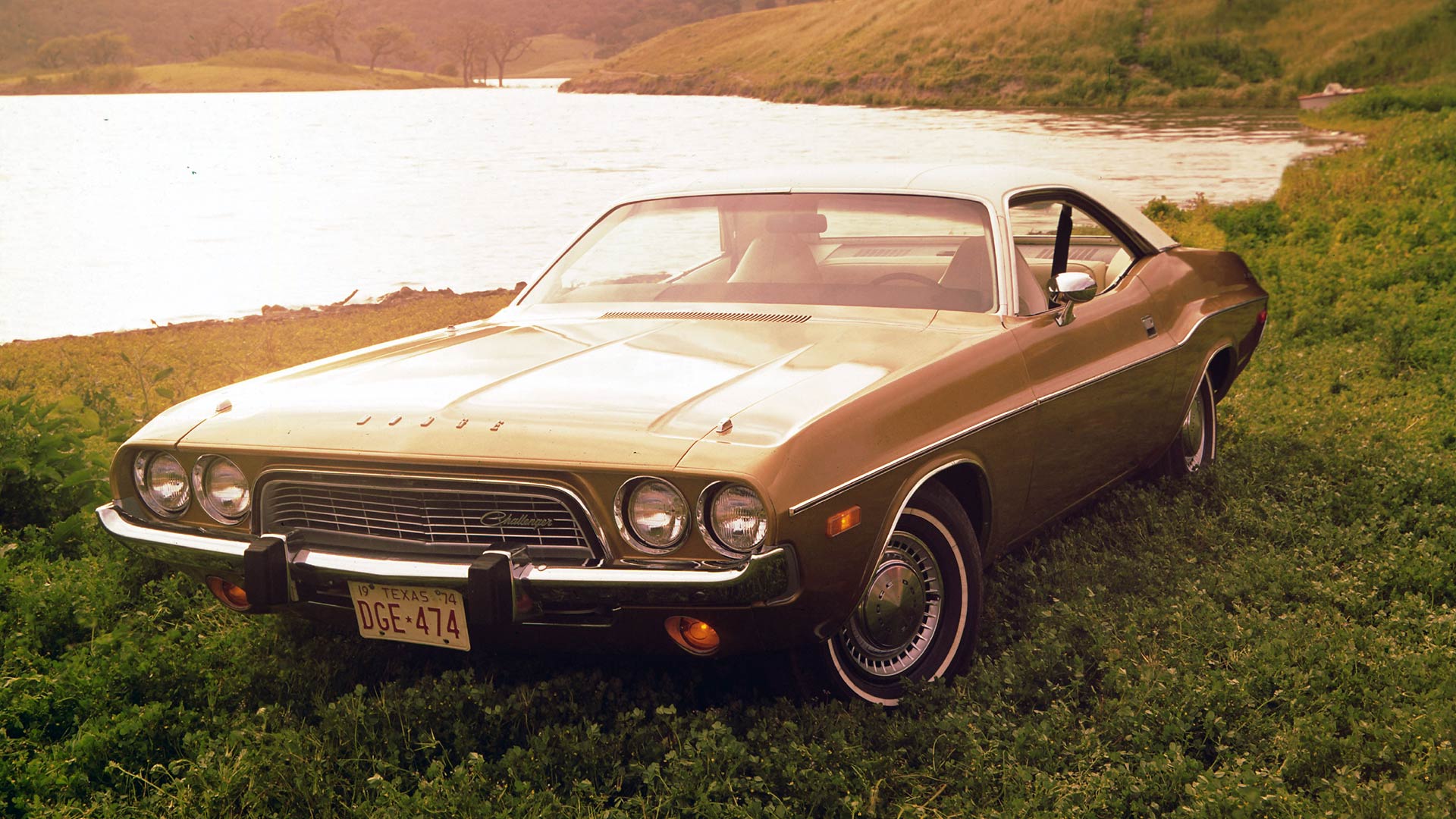
By 1974 the writing was on the wall for the Challenger, with Dodge making no changes other than adding extra safety equipment. This included upgraded seat belts, and a federally mandated ignition lock.
Insurance prices, emissions regulations, and higher fuel prices meant that the first-generation Challenger came to an end in 1974. The motoring public had fallen out of love with monstrous muscle cars, with more fuel efficient offerings were in vogue. In total Dodge produced over 188,000 Challengers during the initial run from 1970 to 1974.
1978 Dodge Colt Challenger
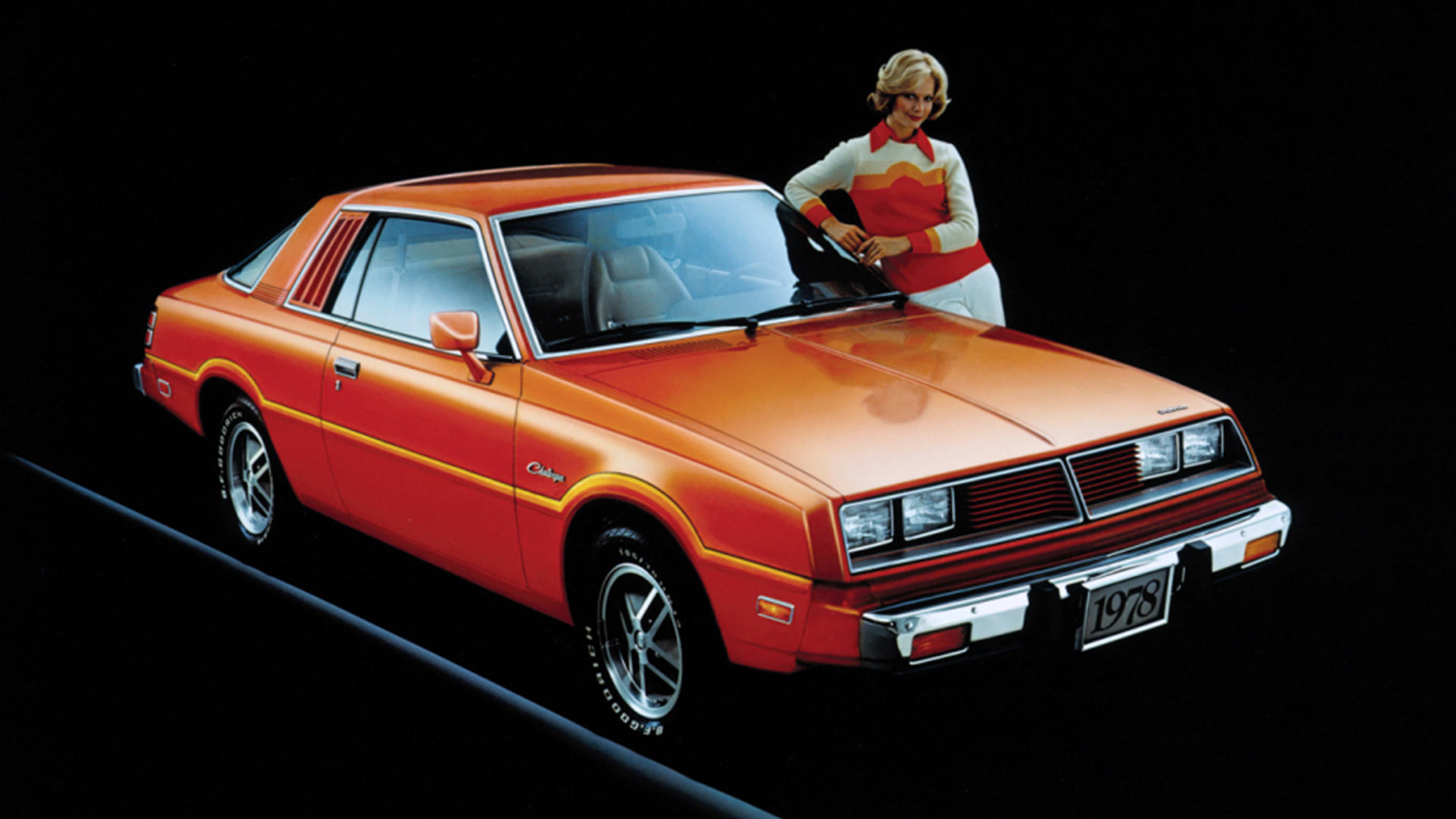
Four years after disappearing, the Challenger name reappeared attached to a Dodge-branded version of the Mitsubishi Galant Lambda coupe. Along with the Plymouth Sapporo, these Japanese-imported vehicles were aimed at helping Chrysler meet the U.S. Corporate Average Fuel Economy requirements.
Whilst the Mitsubishi-derived models were at least rear-wheel drive, there were obviously no large V-8 engines beneath the hood. Instead, a 1.6-liter four-cylinder unit with 77 horsepower was standard with a 2.6-liter 105 horsepower version available as an option.
1983 Dodge Challenger
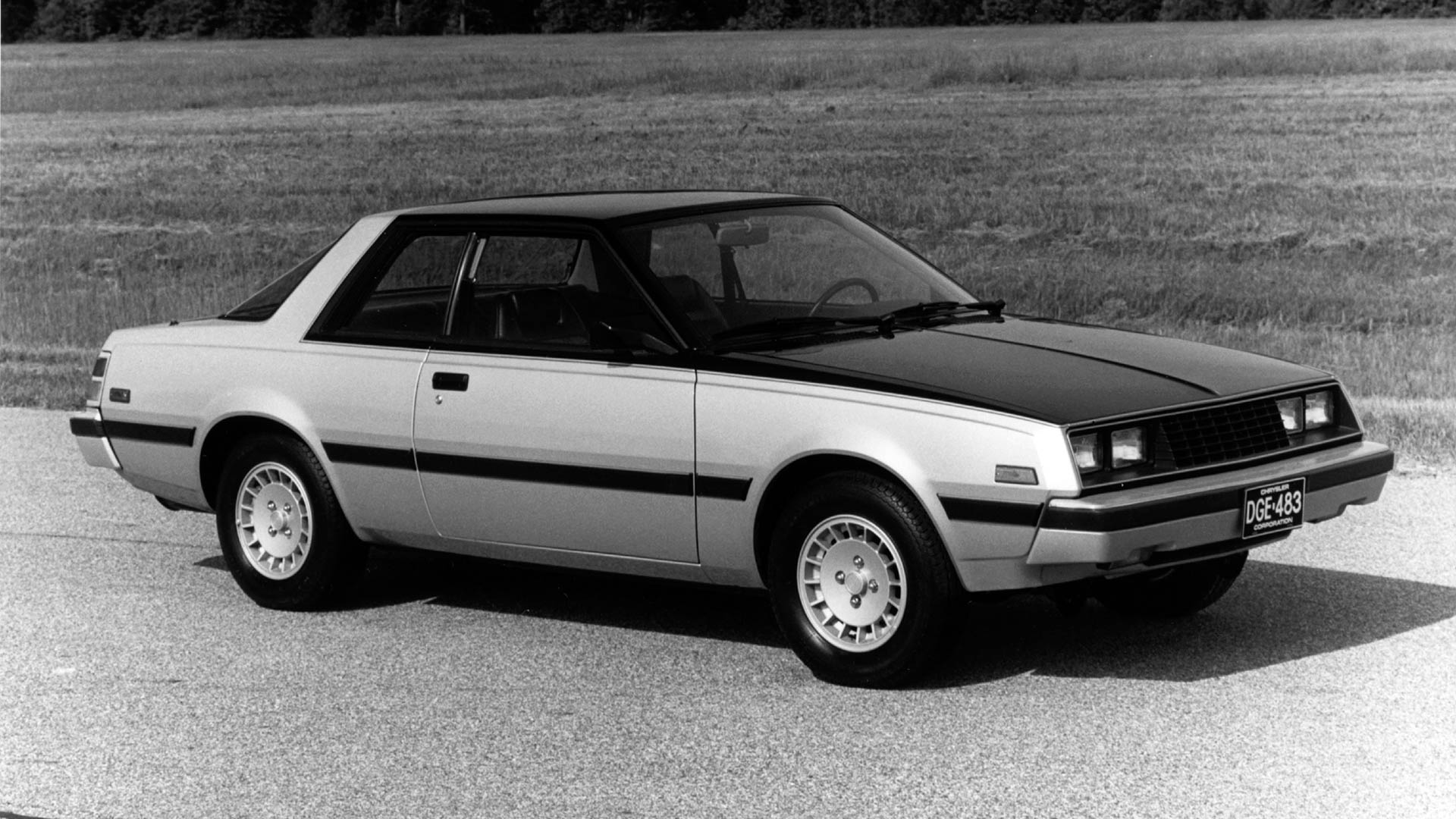
As Chrysler continued to improve its relationship with Mitsubishi, the Challenger gained a mild restyle for the 1981 model year. The car also dropped the ‘Colt’ name, simply being sold as the Dodge Challenger.
Sales of the imported Challenger averaged around 13,000 units each year, until the model was withdrawn in 1983. Chrysler would go on to form Diamond-Star Motors with Mitsubishi, developing bespoke models for production in the United States.
2006 Dodge Challenger Concept
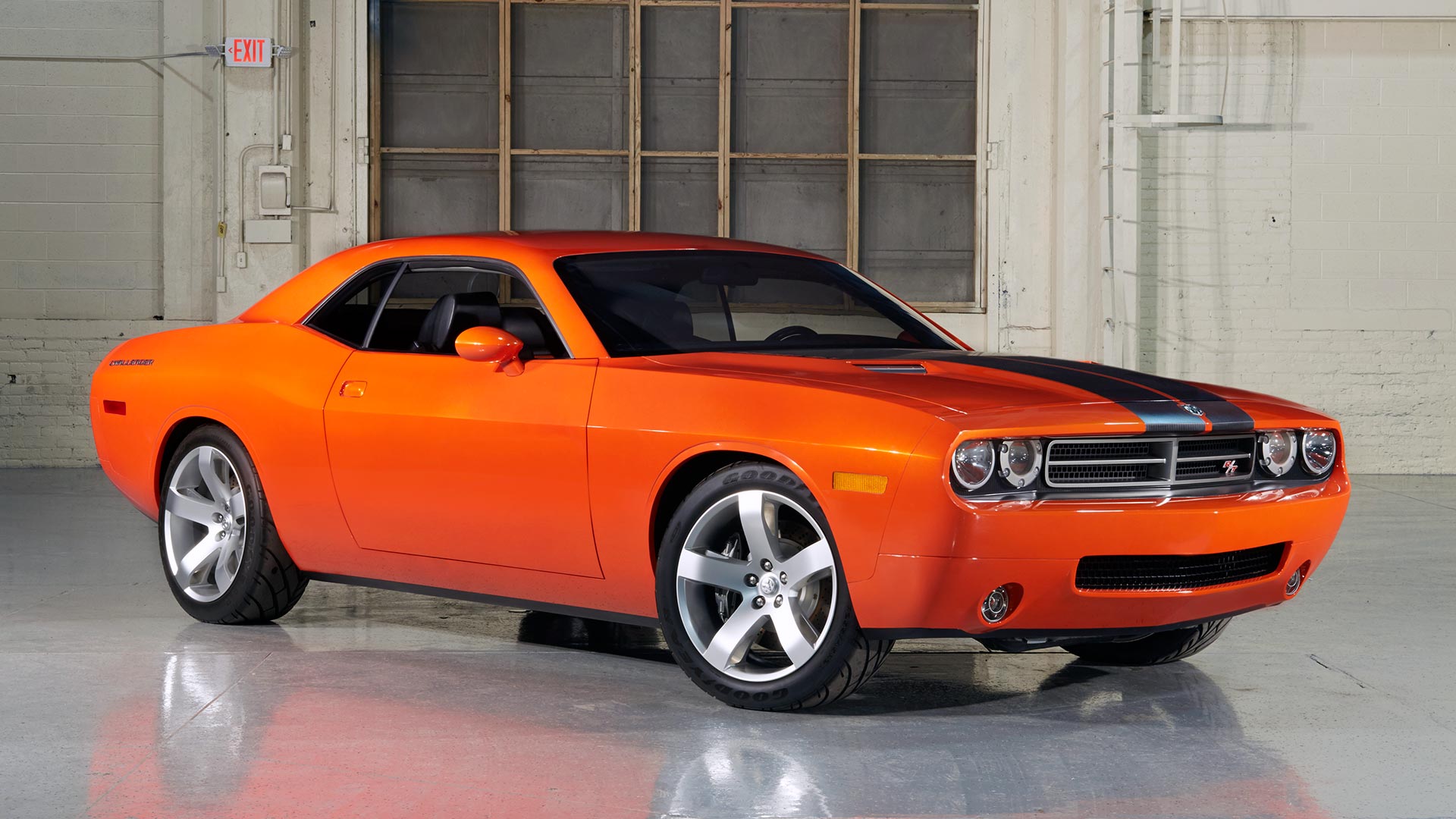
More than 30 years after the first-generation Challenger had disappeared from sale, Dodge presented a new concept version of it at the 2006 Detroit Auto Show. The two-door coupe maintained all the proportions and details of the original Challenger, but updated to meet the requirements of the 21st century. A Hemi engine could be found beneath the hood, and it sent its power to the rear wheels.
The 2005 Ford Mustang had already demonstrated the appeal of retro-styled muscle cars, and the Challenger received substantial attention at the Detroit event. Mopar fans pleaded with Dodge to make it real.
2008 Dodge Challenger SRT8
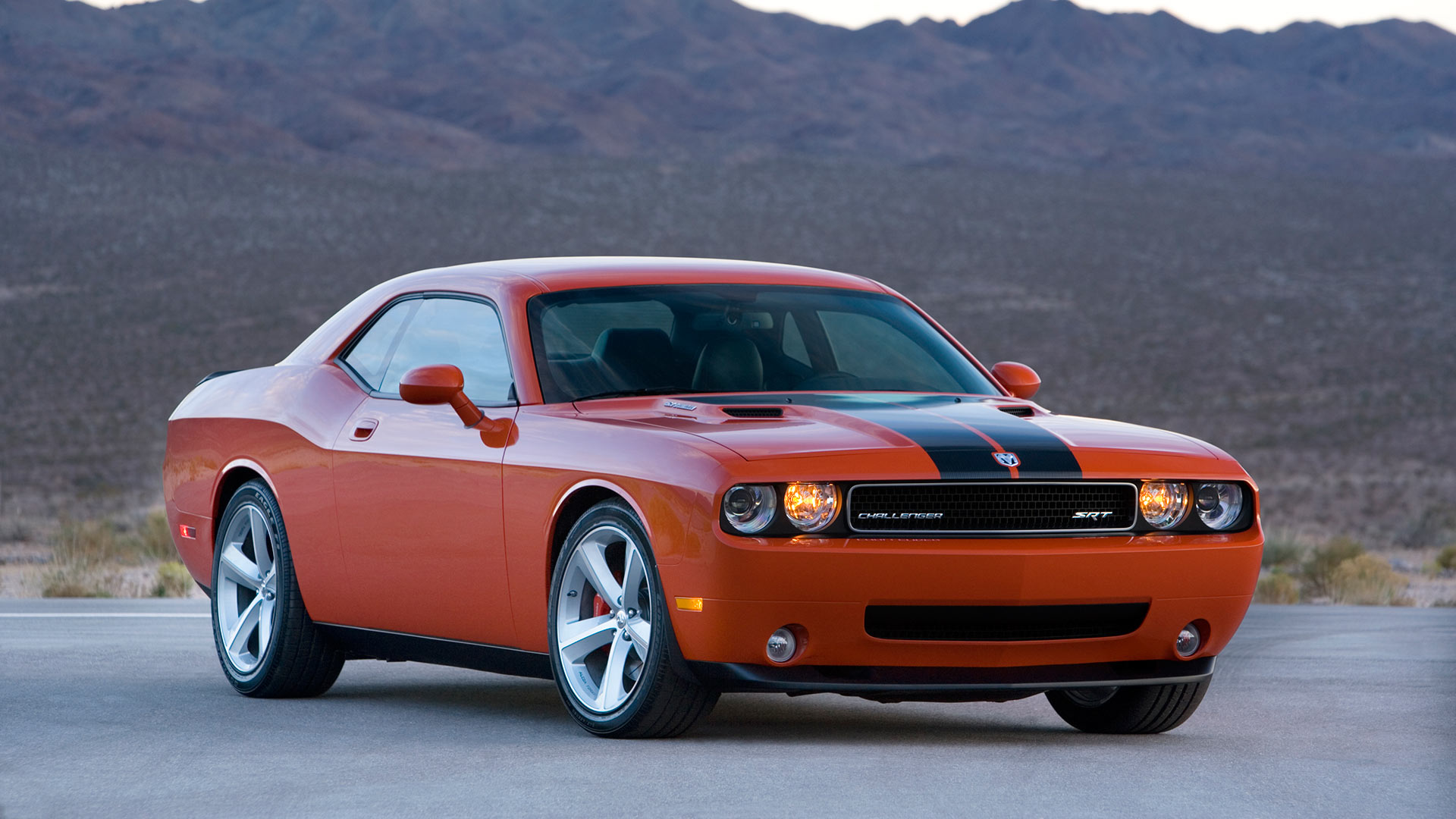
Less than two years later, Dodge revealed the production-ready version of the third-generation Challenger. Most notable was the fact that the styling had evolved only slightly from the concept version, leaving the finished product still resembling the 1970 original.
Beneath the retro styling was a version of the Chrysler LX platform. Whilst the Challenger used a bespoke shortened version, the basic underpinnings still were shared with the Chrysler 300 sedan and Dodge Charger.
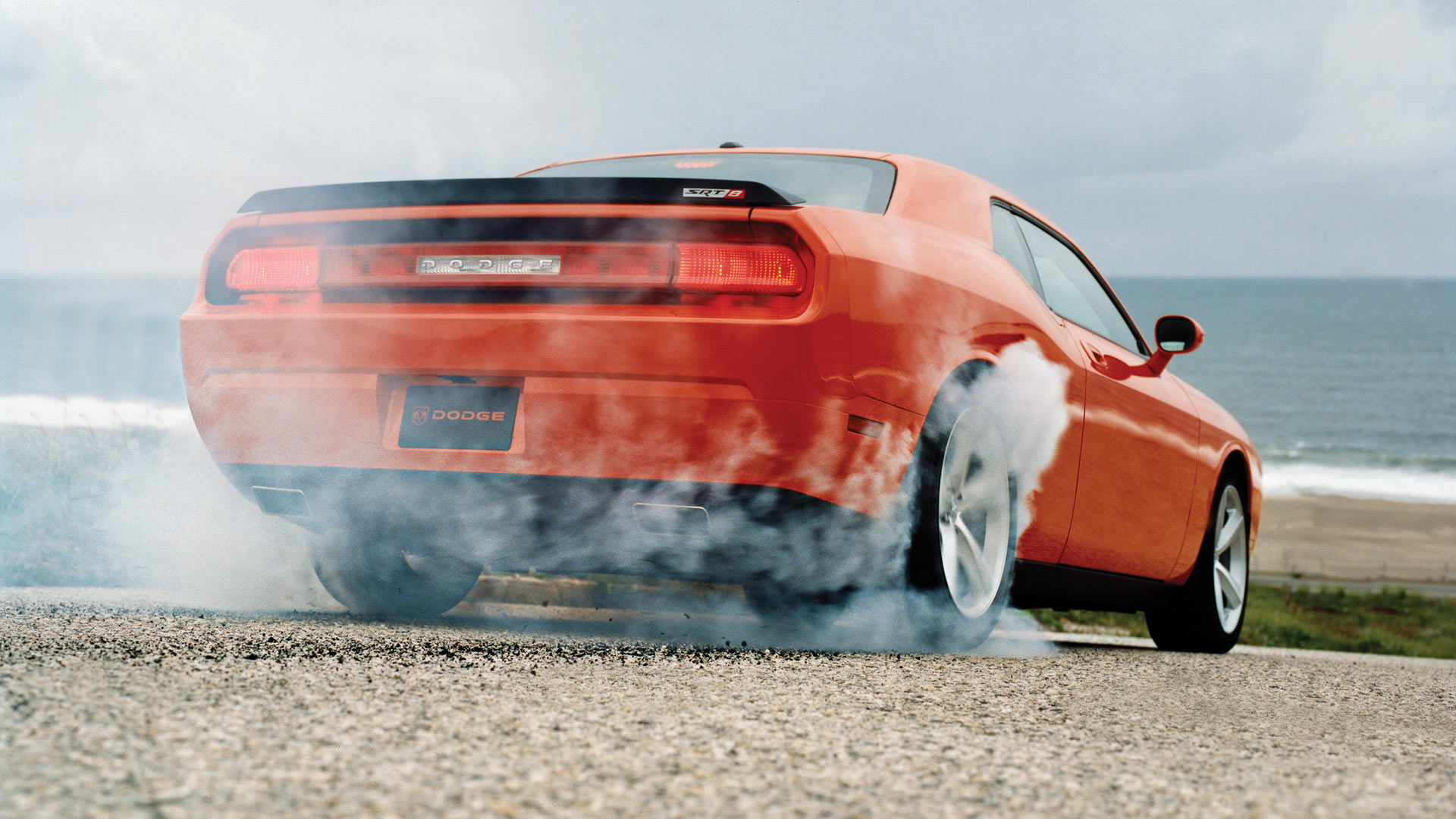
The Challenger SRT8 was the main focus of the launch for the new Challenger. Powered by a 6.1-liter Hemi V-8 engine, the outputs of 425 horsepower and 420 lb-ft of torque meant it was close in spirit to the legendary first-generation Challengers. However, those 1970 cars did without Brembo brakes, or optional Goodyear Eagle F1 tires.
A total of 6,400 units of the new Challenger SRT8 found owners for 2008. The very first production car was sold at the Barrett-Jackson Scottsdale auction, achieving a total of $400,000 for charity.
2008 Dodge Challenger SRT10 Concept
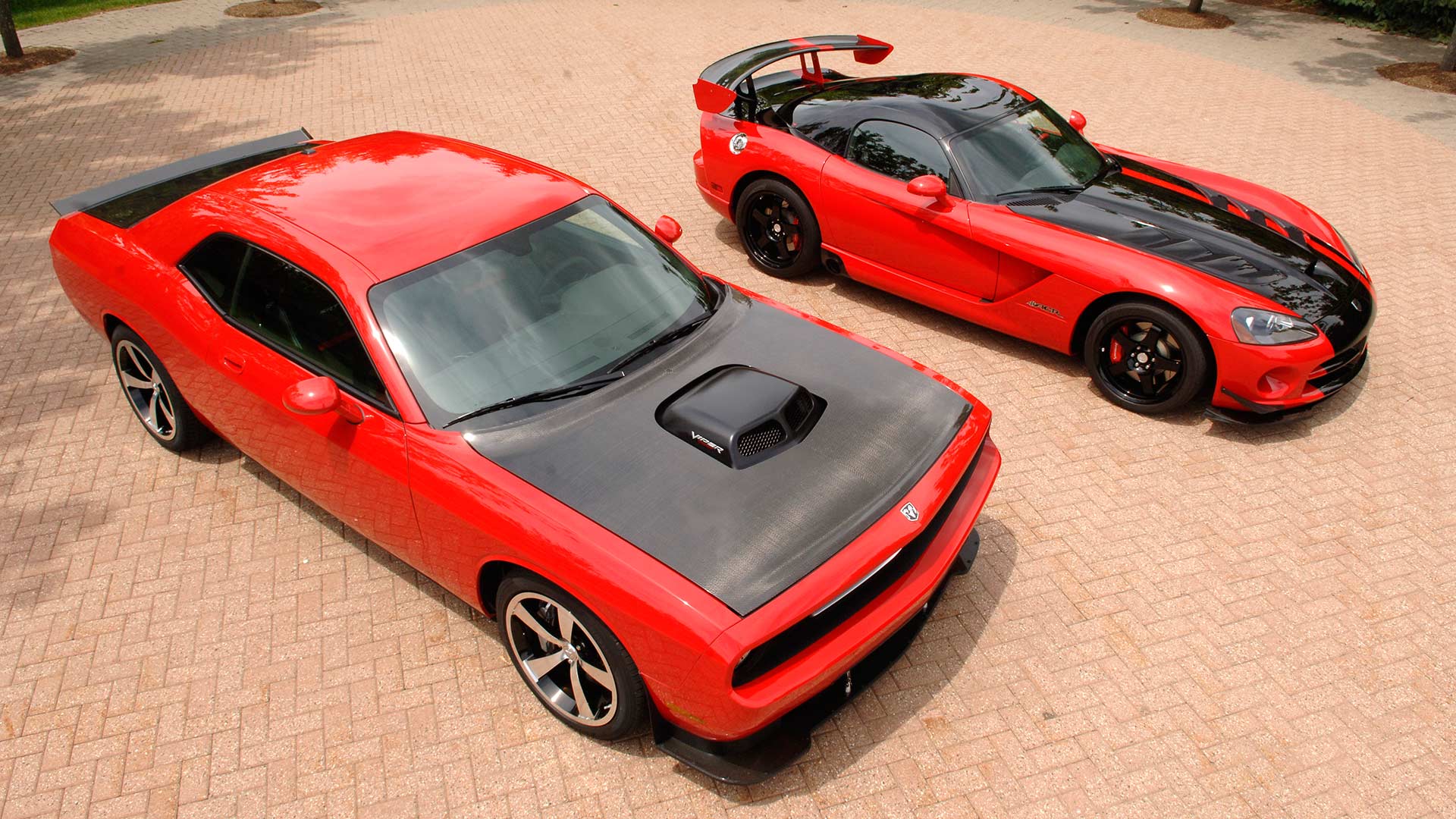
Dodge added additional engines to the third-generation Challenger range, including a 3.5-liter V-6 for the SE model, and a 5.7-liter Hemi V-8 for the mid-range R/T version. All of these attempted to capture a broad spectrum of potential buyers, just like the original car from 1970.
2008 also saw Dodge experiment with an extreme Challenger concept. The SRT10 featured the 8.4-liter V-10 engine from the Viper sports car. With 600 horsepower and 560 lb-ft of torque, it endowed the Challenger with serious pace, but sadly, it was only an engineering concept to prove what SRT could do.
2010 Dodge Challenger NASCAR Nationwide race car
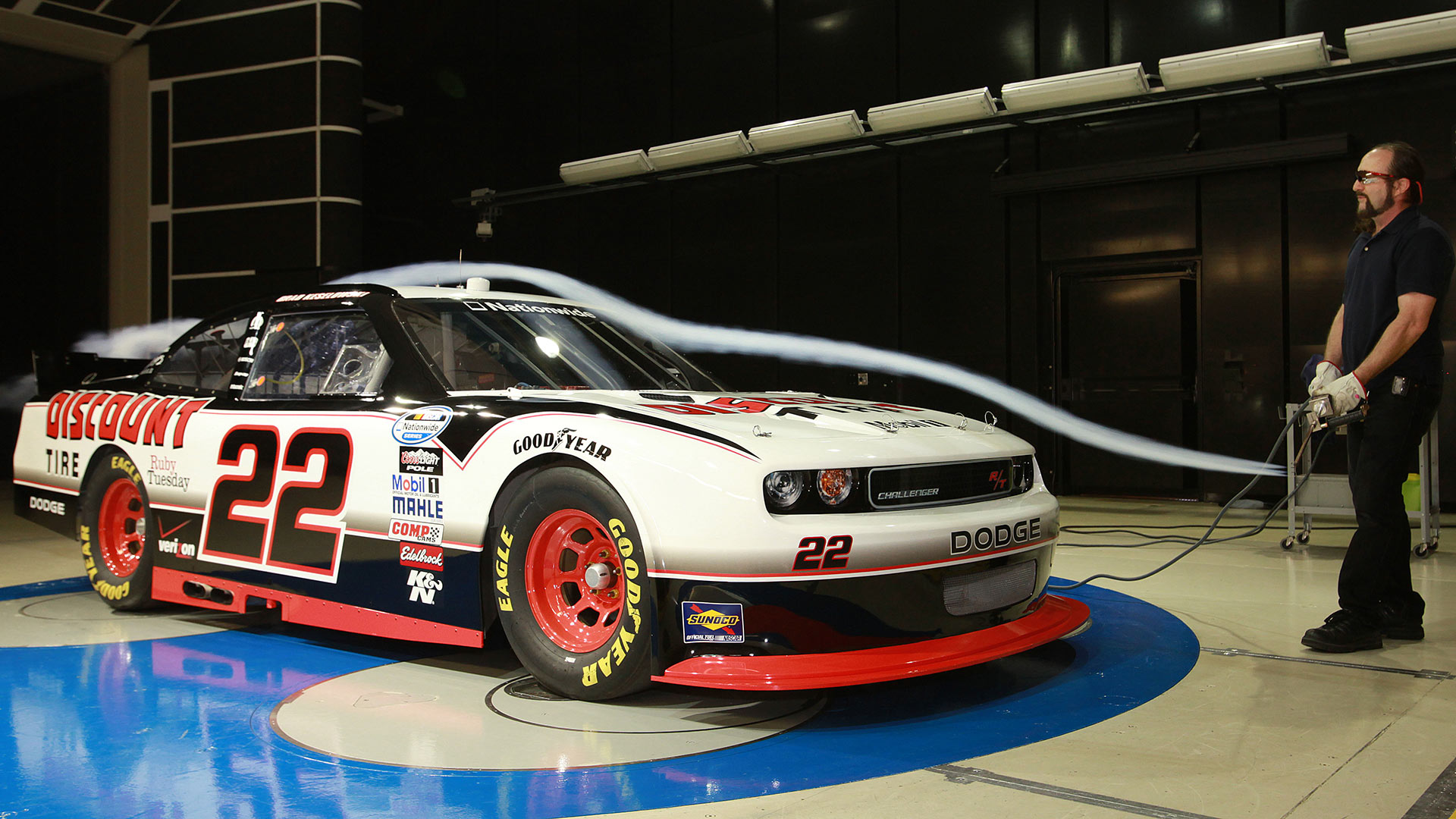
To help promote the new Challenger, Dodge also worked with Penske Racing to develop the car for use in the NASCAR Nationwide Series. This decision was undoubtedly spurred on by the announcement that Ford would use the Mustang as the basis for its Nationwide race programme.
Dodge would ultimately abandon all tiers of NASCAR racing at the end of 2012, leaving the Challenger project unsupported. Privateer teams would continue to use the Challenger, with it continuing in competition until 2018.
2011 Dodge Challenger SRT8 392
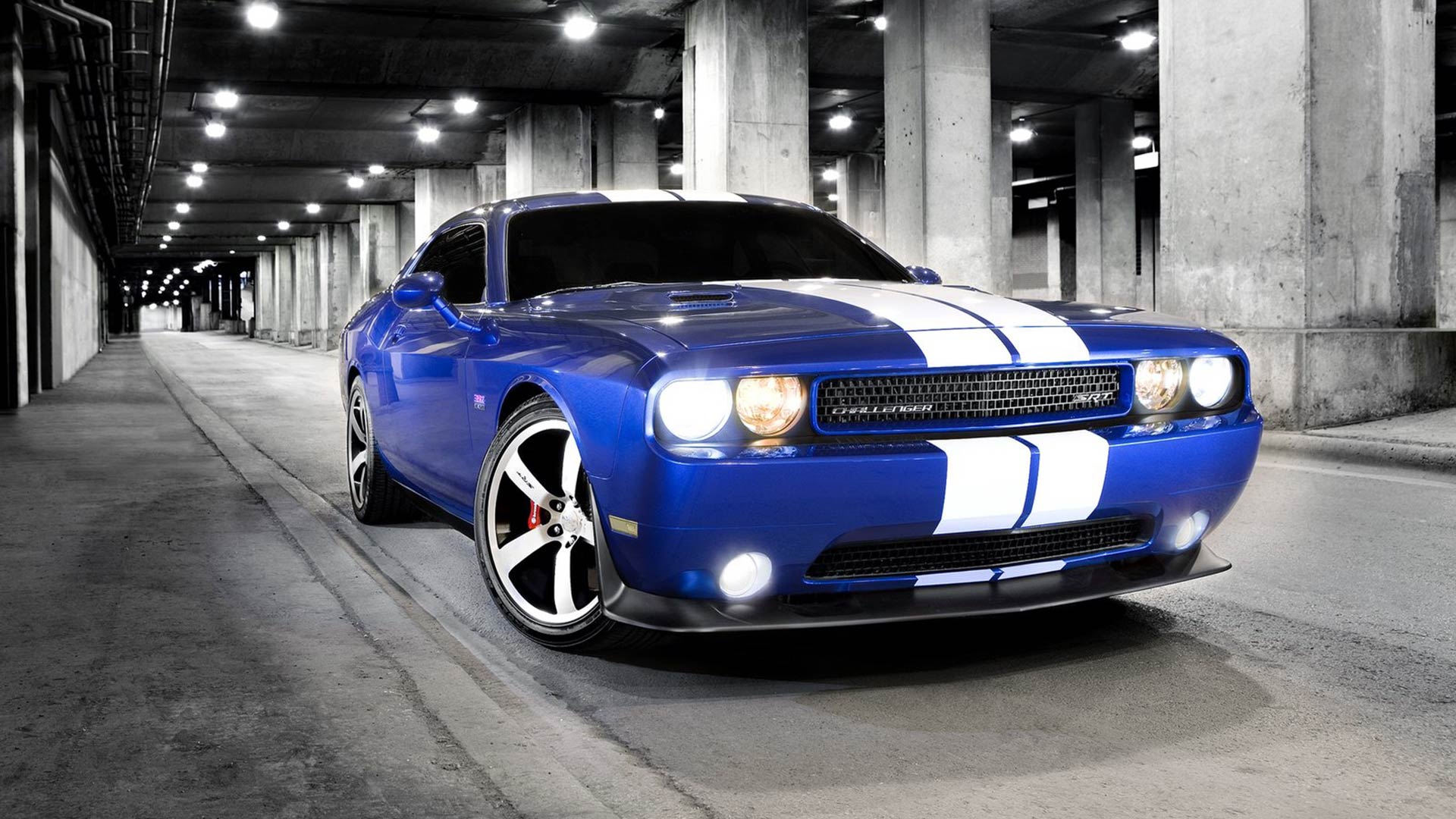
Back on the street, Dodge continued to improve and evolve the Challenger, with a host of changes made for 2011. Whilst the entire range of engines received improvements, it was the introduction of the new 392-cubic inch (6.4-liter) version of the Hemi V-8 for the SRT8 that made the most noise.
Output was increased to 470 horsepower and 470 lb-ft of torque, with the exhaust note enhanced for a deeper bass burble. Dodge promised a 0-60 mph time in under 5 seconds, along with a quarter-mile time in the high 12 second range.
2014 Dodge Challenger 100th Anniversary Edition
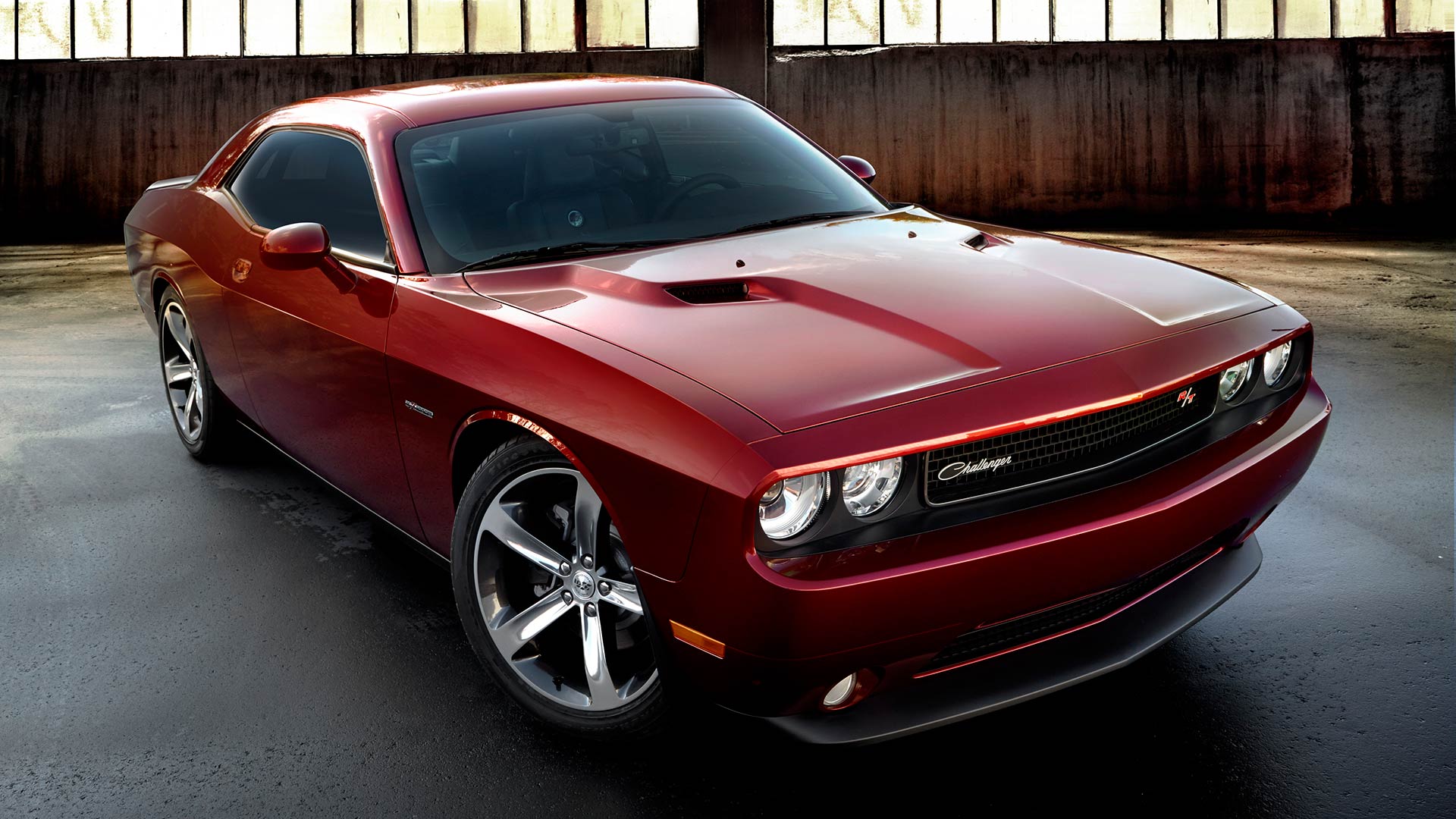
Helping mark the centenary of the Dodge brand were a number of special edition models for 2014. Naturally, this included the Challenger, with the 100th Anniversary package offered for the SXT Plus and R/T Plus variants.
A choice of paint colors could be had, but the stand out choice was the unique High Octane Red Pearl Coat. Special exterior badges and wheel center caps were also included, with Nappa leather seats on the inside. Brass-colored accent stitching, and more 100th Anniversary badging, completed the interior makeover.
2015 Dodge Challenger SRT 392
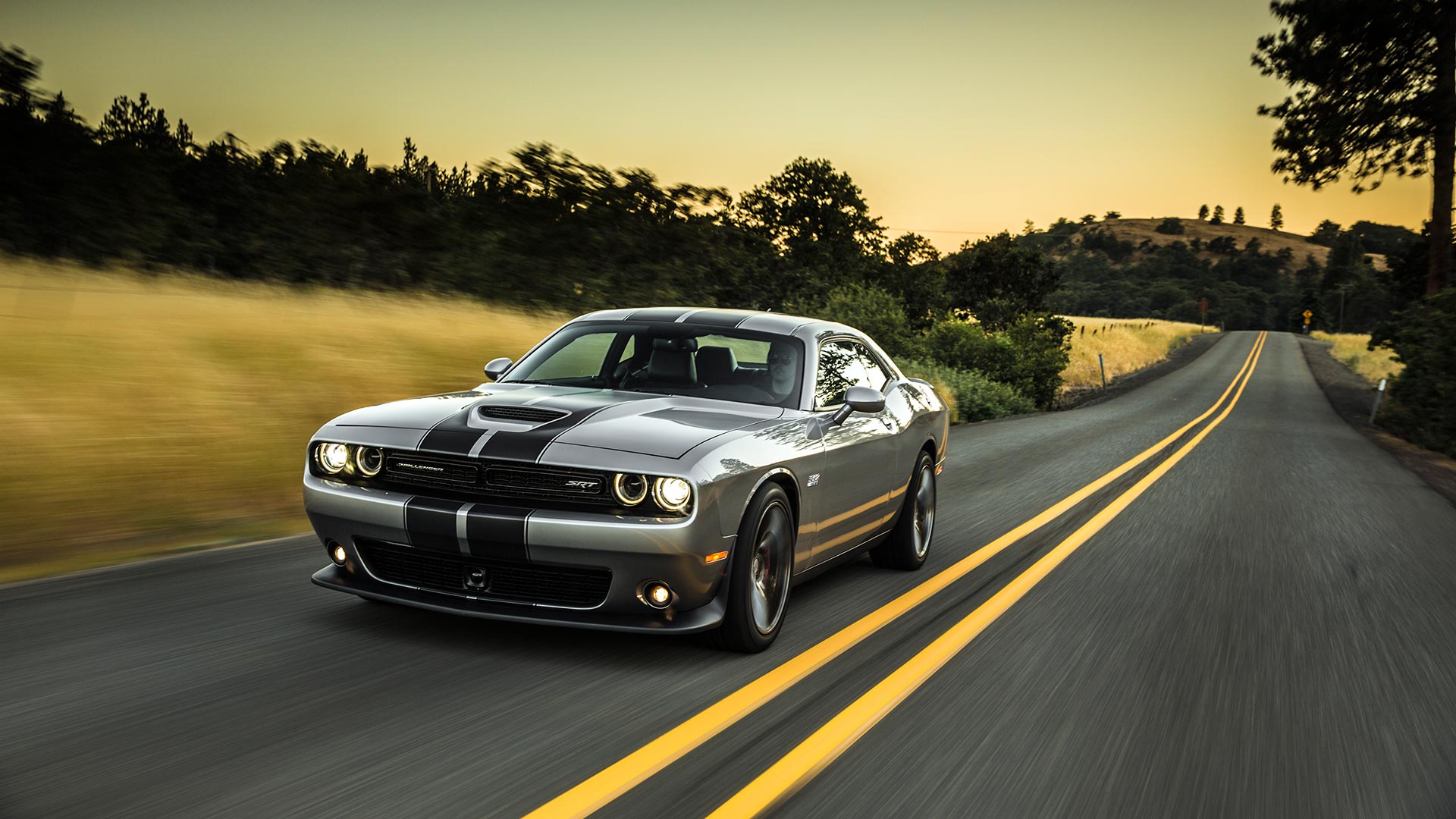
After seven years on sale, the time was ripe in 2015 for the Challenger to undergo a more substantial overhaul. This included an updated version of the LX platform, branded as the LA, which allowed the Challenger to use the eight-speed TorqueFlite automatic transmission.
On the outside, the 2015 Challenger gained a front grille which borrowed in style from the 1971 model year version. New split tail lights were also inspired by the 1971 car, whilst tweaks were made to the rear fenders. The SRT8 name was dropped, whilst the interior of the Challenger was also updated to feature a new 7-inch multimedia screen.
2015 Dodge Challenger SRT Hellcat
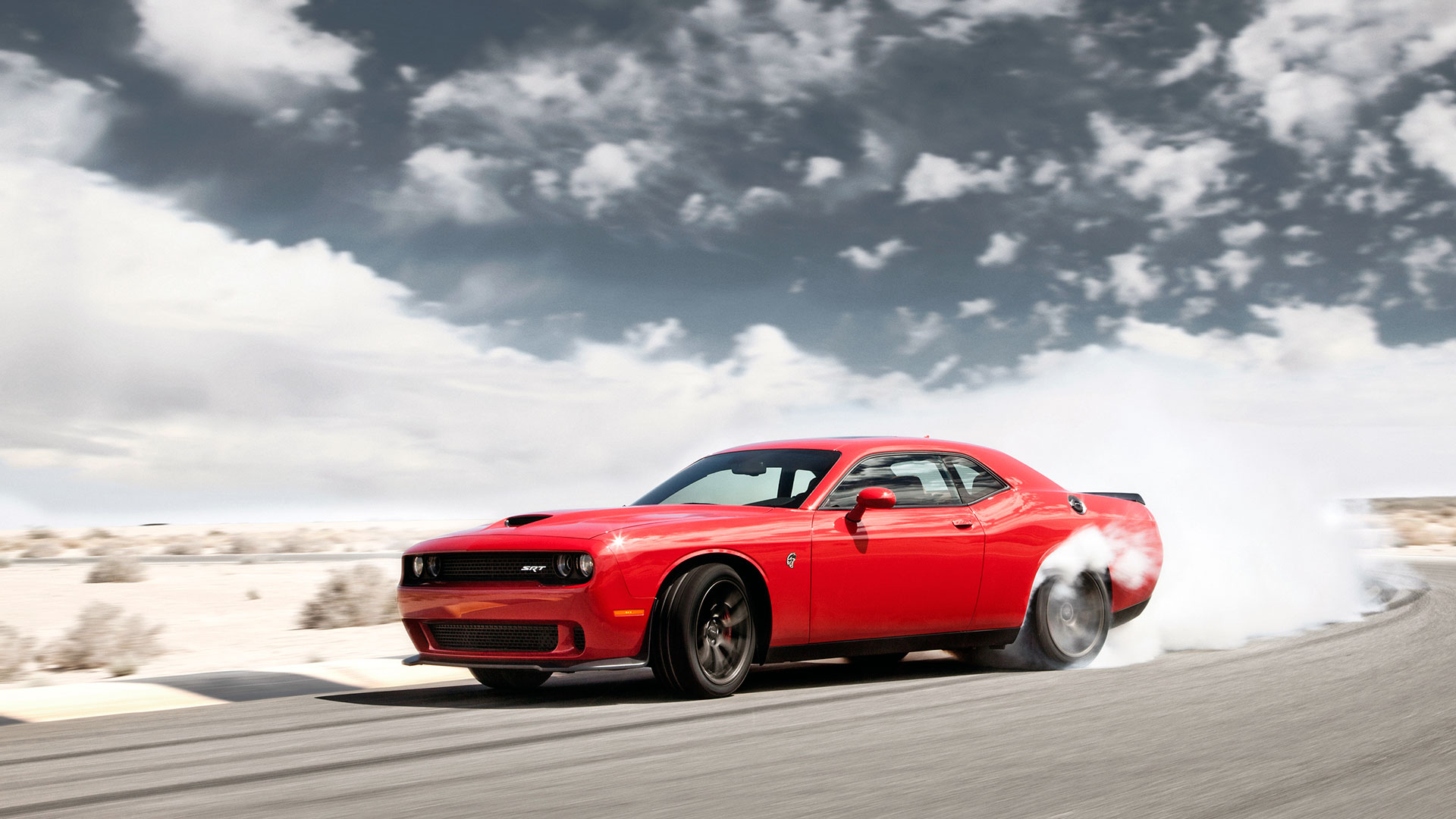
The biggest news for the 2015 model year was the announcement of the SRT Hellcat. Proving that the muscle car horsepower war was truly in effect, Dodge announced the new model with a supercharged 6.2-liter Hemi V-8 engine.
Peak power of 707 horsepower, with torque rated at 650 lb-ft, created the most powerful production muscle car made to date. To further emphasis how much power the Hellcat offered, Dodge supplied it with two keys. Drivers needed to use the special red key in order to unlock the full 707 horsepower potential, much like a Bugatti Veyron.
2015 Dodge Challenger SRT Hellcat
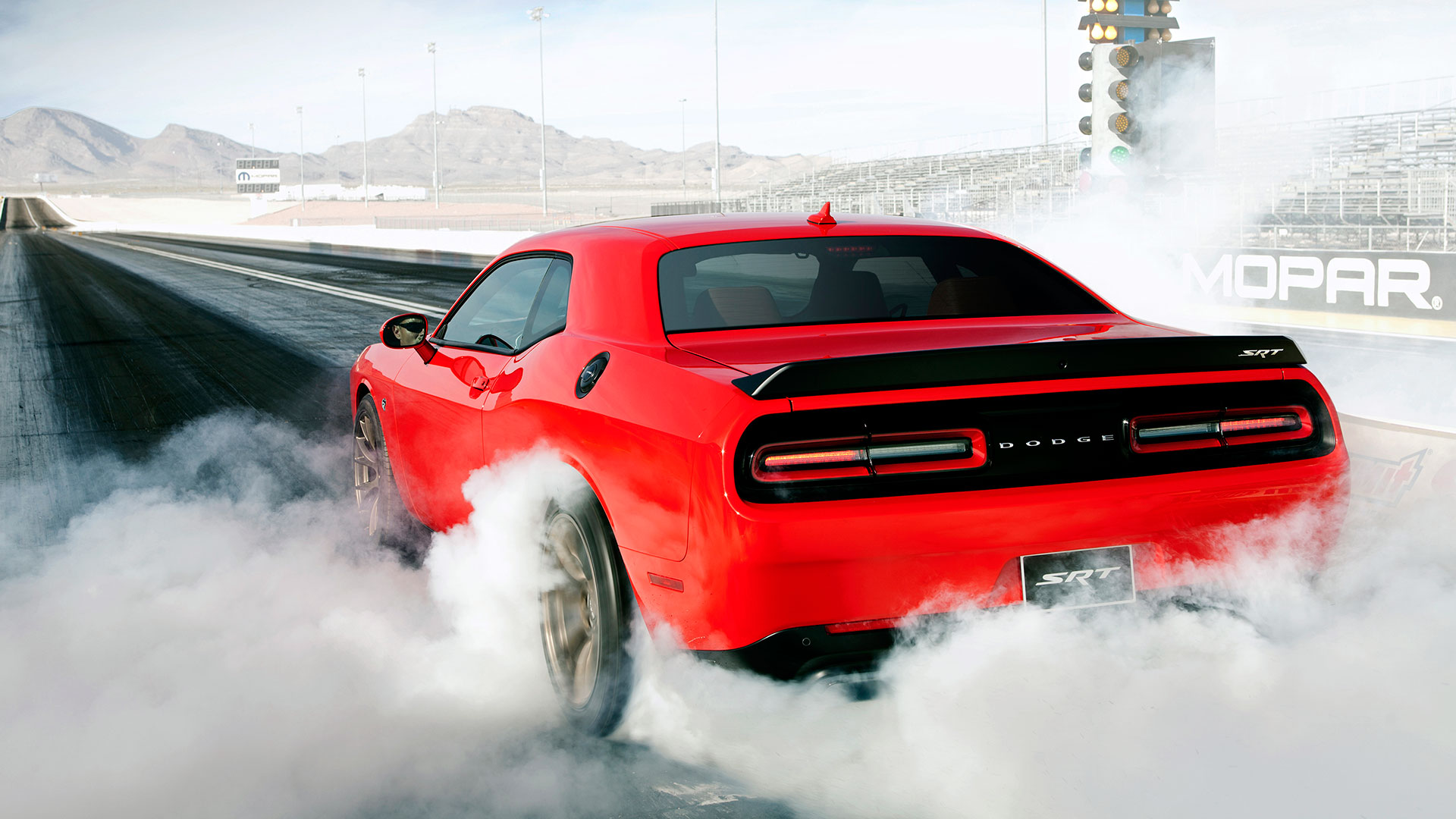
Making the Hellcat was not simply Dodge dumping a large engine into the Challenger. The company had worked hard to develop the first supercharged Hemi engine, and included features like the air intake within the driver’s side parking lamp.
Being priced from $59,995, the Hellcat appeared an absolute performance bargain compared to traditional sports cars. The NHRA confirmed it was capable of a quarter-mile sprint in 10.85 seconds, whilst a top speed just shy of 200 mph was also possible.
2017 Dodge Challenger GT AWD
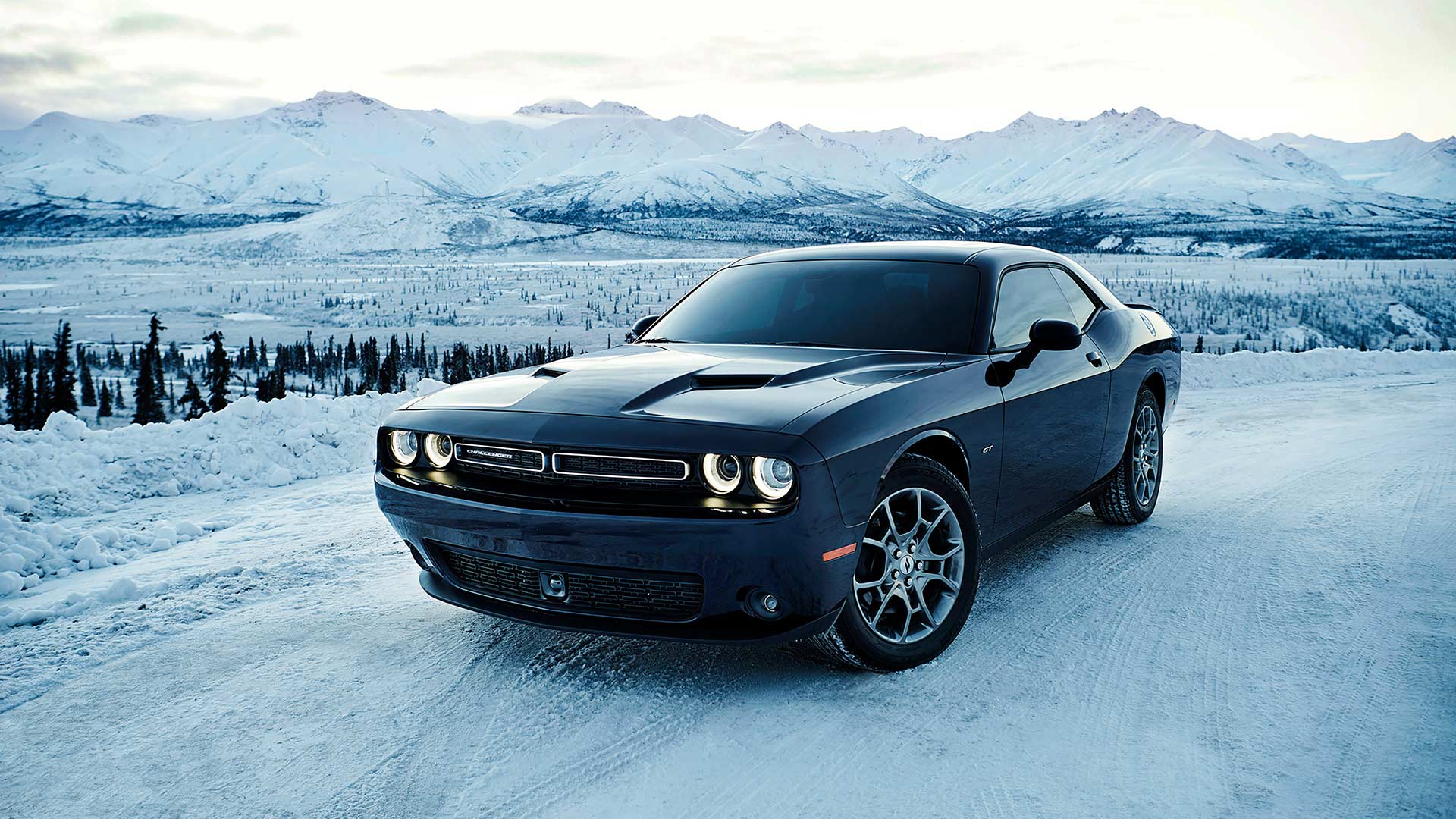
New in 2017 was the unveiling of a Challenger with all-wheel drive ability. The new Challenger GT AWD meant that Mopar fans could potentially enjoy their Dodge coupe all year round. Whilst the AWD system was normally biased towards the rear wheels, it could send up to 38% of torque to the front axle.
The GT AWD version of the 2017 Challenger could only be had with the 3.6-liter Pentastar V-6 engine, producing 305 horsepower and 268 lb-ft of torque. Dodge’s eight-speed TorqueFlite automatic transmission is also standard, along with heated leather seats to help in cold climates.
2017 Dodge Challenger TA 392
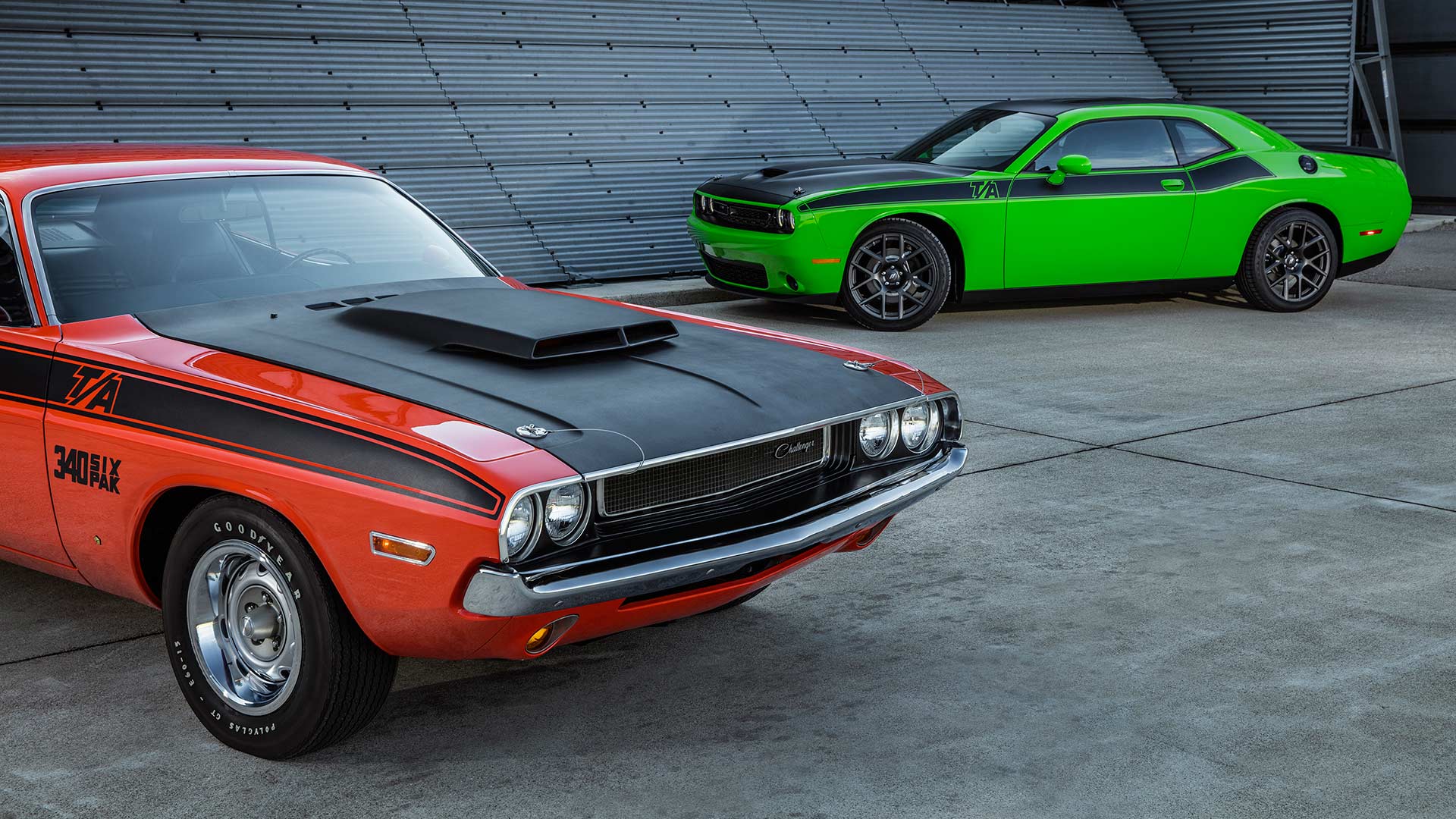
The first-generation Challenger T/A may have been a short lived offering, with just 2,399 examples built for the road. Yet its legacy amongst Mopar fans made it ripe for a revival in 2017. Offered on three different Challenger models, the T/A package was most potent with the 392 engine with its 485 horsepower.
The satin black hood and body stripes were the most noticeable changes, and were matched with wider 20-inch lightweight alloy wheels. Retro color choices were also on the cards, with buyers even able to specify old-school hood pins. The T/A made use of the Air Catcher headlights from the Hellcat, whilst the 392 version used a special hood design.
2018 Dodge Challenger SRT Demon
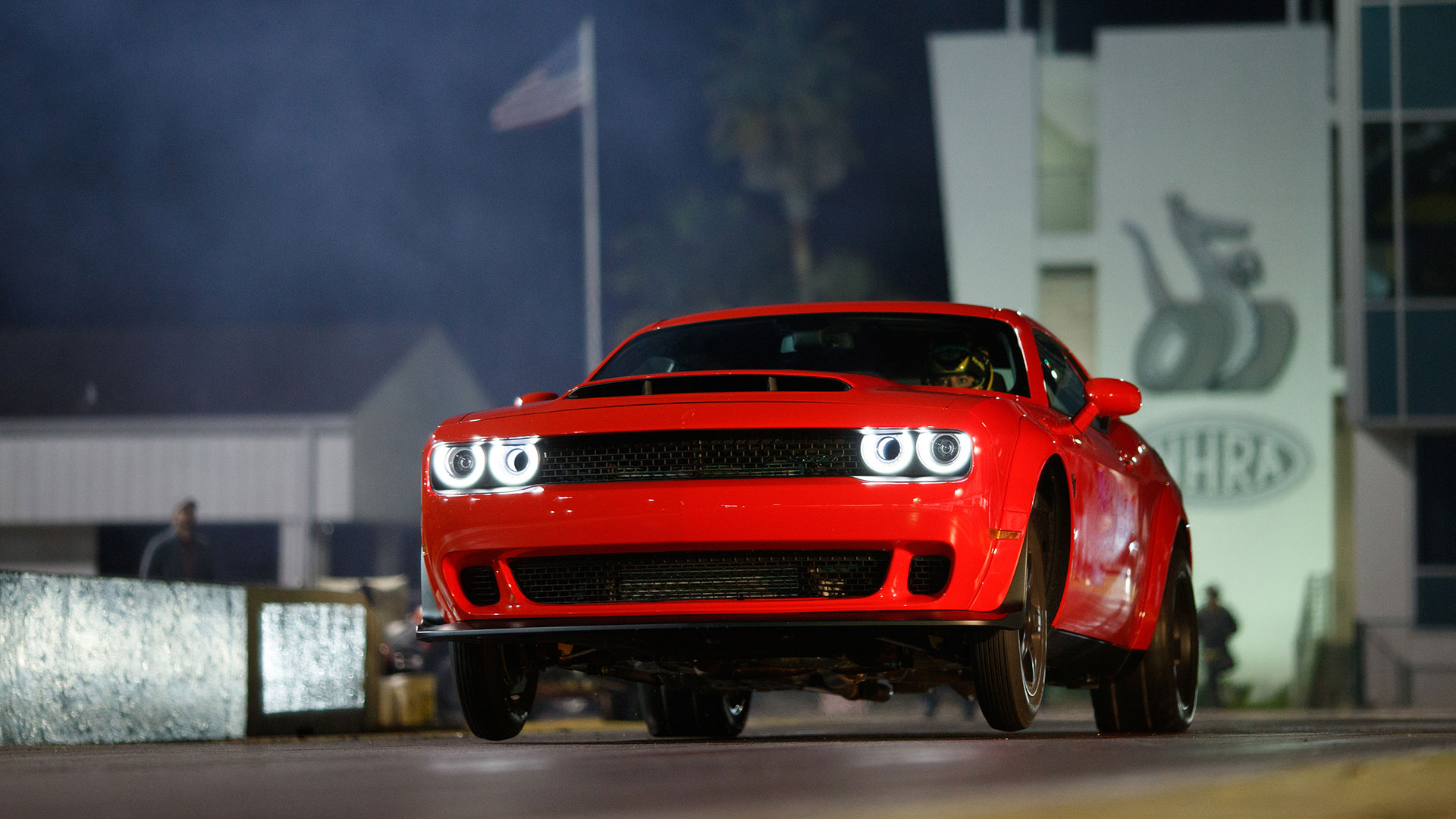
Dodge was clearly on a roll with the Challenger, and opted to push things even further for 2018 with the shocking SRT Demon. Essentially a street-legal dragster, the limited edition Demon set out to capture numerous world records and achievements.
At the heart of the SRT Demon could be found an enhanced version of the 6.2-liter Hemi V-8 from the Hellcat, but with a larger supercharger and the ability to rev higher. A potential for 840 horsepower and 770 lb-ft of torque pushed the Demon into true supercar territory. A special chiller for the air fed into the supercharger, and a transmission brake, were ideas taken from the drag strip.
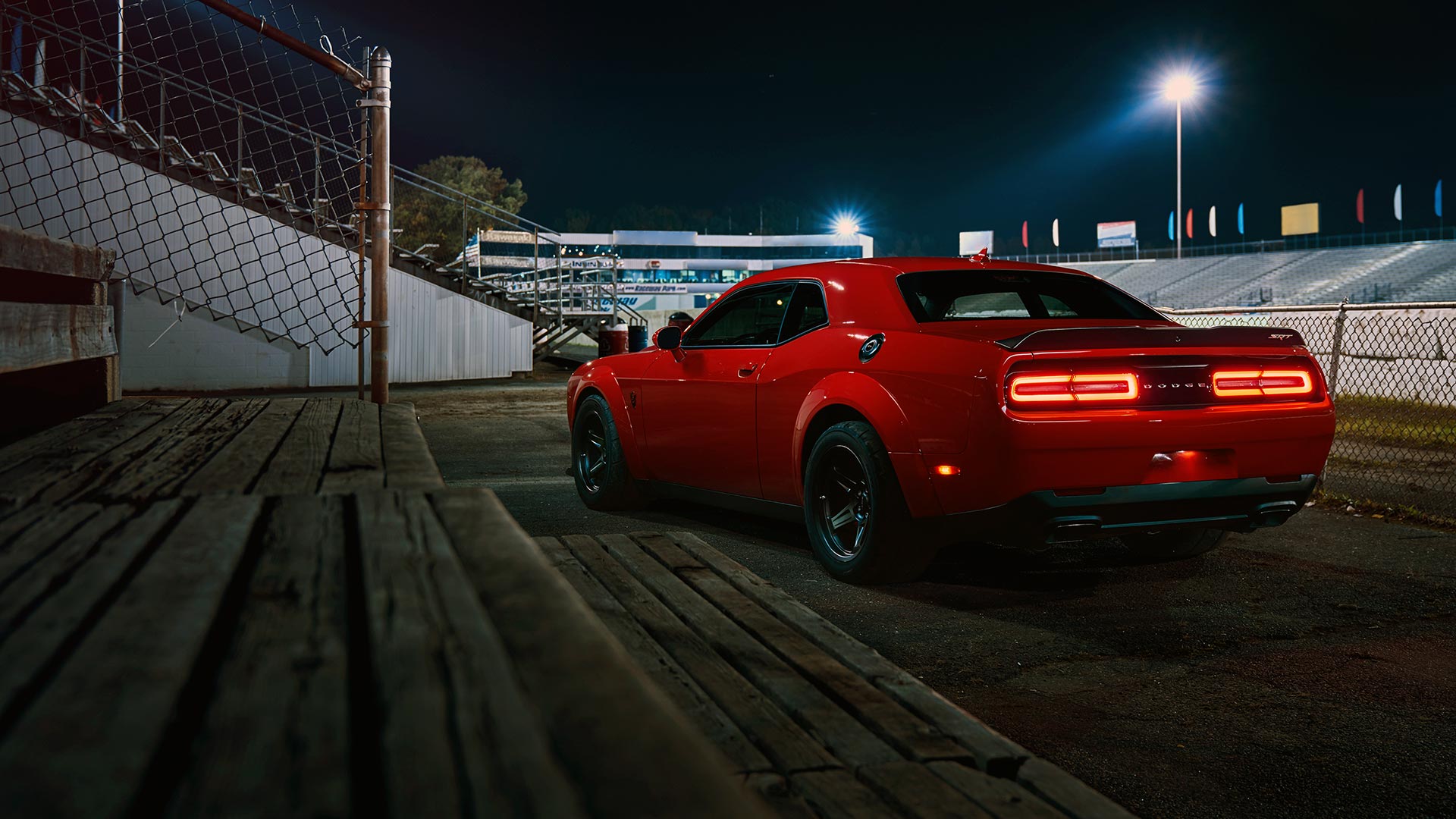
All the technology, and the weight-savings from having no passengers seats as standard, helped the SRT Demon become the fastest accelerating car from 0-60 mph. This sprint took just 2.3 seconds, and also saw the Demon become the first production car to pull a wheelie.
The NHRA certified that the Demon could cover a quarter-mile in just 9.65 seconds, but then acted to ban it from production-based drag racing due to being too fast. Ultimately, the SRT Demon demonstrated that Dodge had found a particular niche for the modern Challenger, and would stop at nothing to maximise its appeal.
2018 Dodge Challenger SRT Hellcat Widebody
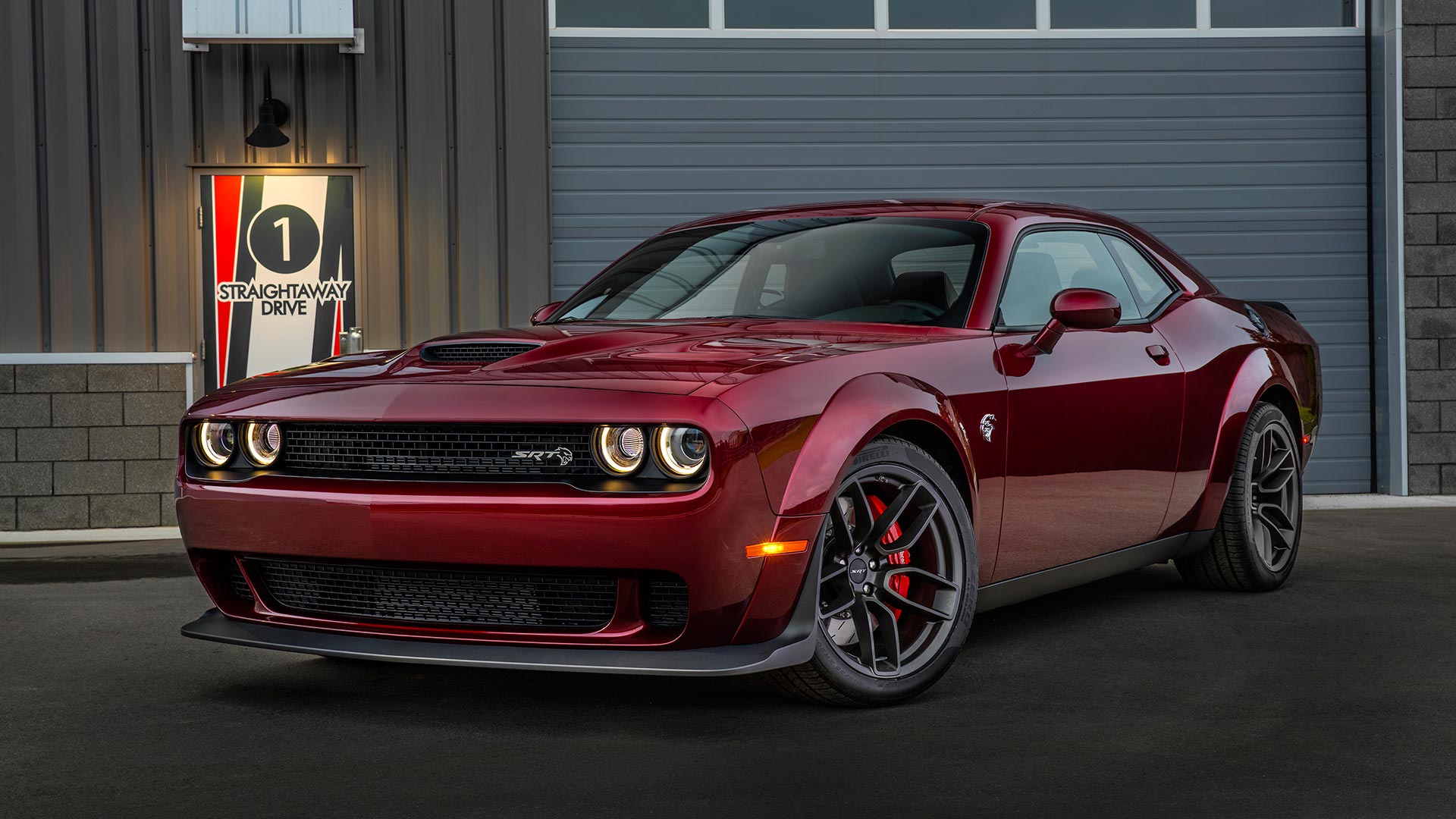
Although the SRT Demon may have been stealing most of the attention for the 2018 model year, Dodge also rolled out updates to other models in the range. Whilst the Demon was all about straight line performance, the SRT Hellcat gained updates to help it go faster around corners.
Central to this was the addition of the stretched Widebody kit, adding an extra 3.5-inches of girth compared to the regular Hellcat. This allowed for wider wheels, along with special Pirelli rubber and retuned power steering. Dodge reported the Hellcat Widebody to both be quicker in acceleration runs, and around a race track, justifying the changes.
2019 Dodge Challenger SRT Hellcat Redeye
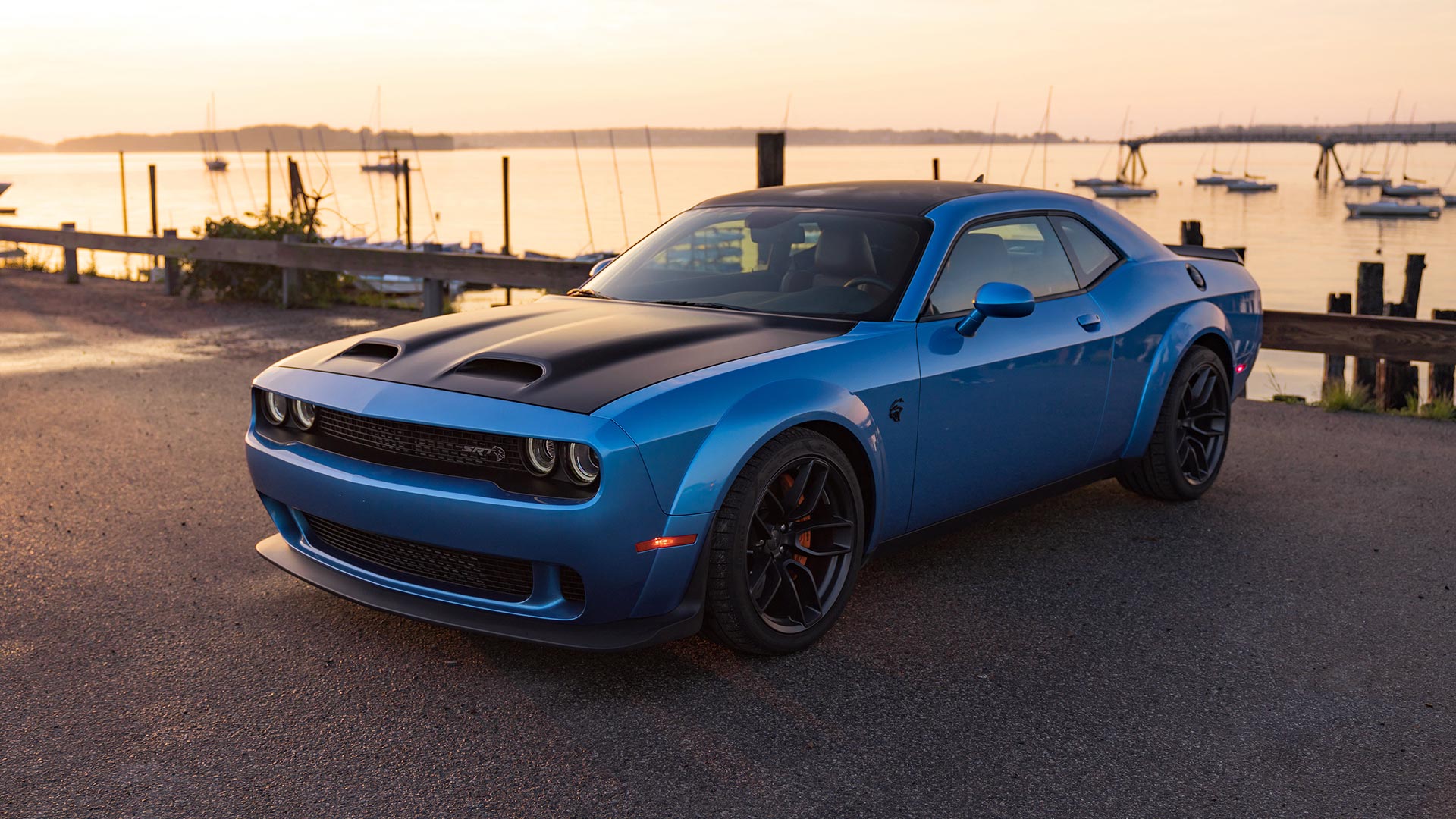
With the SRT Demon only a one-year limited edition offering, Dodge overhauled the Challenger range and offered a more powerful version of the Hellcat. Branded the ‘Redeye’, this Challenger uses a 797 horsepower version of the 6.2-liter supercharged Hemi V-8 found in the Demon.
Other items borrowed from Demon included the special Power Chiller, a torque reserve function, and upgraded drive shafts. Keen Challenger fans could spot the special model thanks to the new hood with its dual snorkels.
2020 Dodge Challenger RT 50th Anniversary
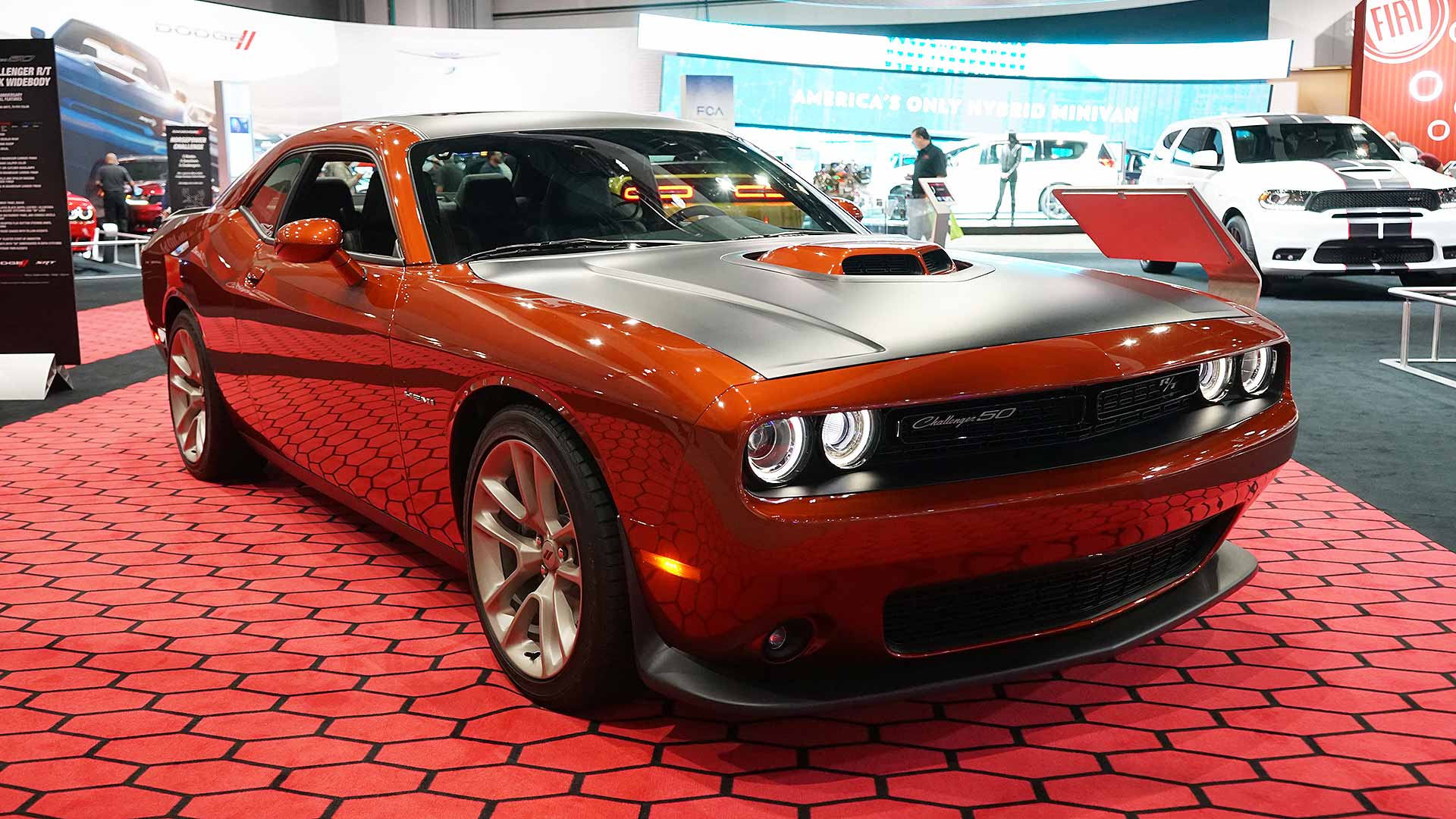
The limited edition Challenger 50th Anniversary package can be added to a number of models, running from the GT through to the R/T Scat Pack versions. Priced from $4,995, the package can be ordered at Dodge dealerships from December 2019. Hellcat models will simply receive the 50th Anniversary badging for the 2020 model year.
Key to 50th Anniversary are a range of classic High Impact Paint Mopar colors, including Go Mango, Tor Red, and F8 Green. A satin black hood and roof are standard, along with special 50th Anniversary badging. Unique 20-inch wheels, branded as ‘Gold School’ are also fitted to all models.
2020 Dodge Challenger RT Scat Pack Widebody 50th Anniversary
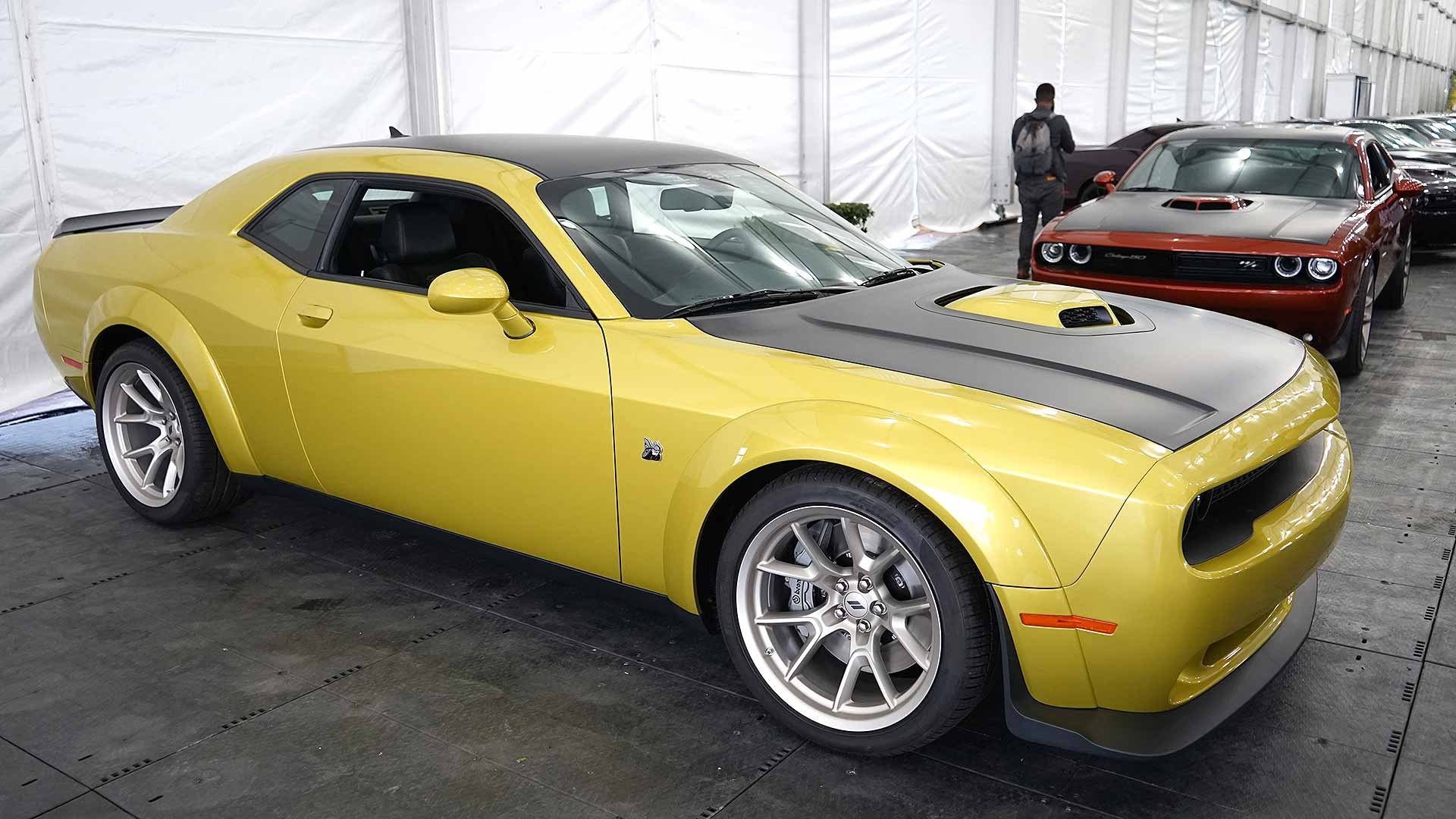
Those opting for the R/T Challenger with the 50th Anniversary package also gain another retro treat. An actual Shaker hood is fitted, directing air into the 5.7-liter or 392-cubic inch Hemi V-8 engines, just like the original 1970 Challenger. Naturally, it does shake with the engine!
Inside, all 50th Anniversary Challengers will have Sepia tones for stitching and trim, along with genuine carbon fiber elements. Most importantly of all will be a color-coded plaque, identifying which one of the 70 examples planned for each paint color and engine configuration you are in.